The Mexican State of Yucatan is located in the Northern part of the Yucatan Peninsula and is an absolute treasure trove of sights, including two world heritage listed Mayan Archaeological sites and an array of divine cenotes! We spent a large part of our time (and money) in the Yucatan.
- Mayan Archaeological Sites:
I love visiting archaeological sites. Consequently, I dragged David around to a number of them in the Yucatan. We visited the two big ticket ones – Chichen Itza and Uxmal, but also lesser known Ek’ Balam and Labna on the Puuc Route.
- Chichen Itza
Chichen Itza was great – one of those places that you have to see in life – but, certainly not my favourite. We went in as soon as the gates opened at 8am and had the place almost to ourselves for the first hour or so (apart from the numerous locals setting up their stalls under every available shady tree!). The ruins have been beautifully restored and you can’t help but marvel at the construction of these mammoth structures, which were built without the aid of the wheel. I loved the classic stepped pyramid “El Castillo” and the mighty “Great Ball Court”, which has remarkable acoustics. The acoustics were so good that we managed to overhear a guide telling his tour group about the ball games that used to be played in the ball court. Apparently, on occasion, the games involved human sacrifice and the aim of the game was to keep the ball from touching the ground, by hitting it with the player’s hips. Ordinarily the losing team would be sacrificed by decapitation, but at Chichen Itza, it was not uncommon for practiced ball players to be sacrificed as well!
Chichen Itza is the priciest of the Mayan Archaeological Sites. In total, we paid 216 pesos each to get in. We decided not to get a guide, which costs between 800 – 1200 pesos and instead, relied on our Lonely Planet (and eavesdropped on other tour groups when possible!) I was generally happy with this strategy, but if you can afford it, a guide would be great, as the signage in all of the Mayan sites is pretty dismal and is solely focused on the architectural style of buildings and really doesn’t bring the ruins to life.
The accommodation options around Chichen Itza are pretty much limited to ritzy hotels, or appalling, moldy and over-priced posadas in Piste. Our tip for budget accommodation (which is probably only really helpful if you have your own car), is to stay in the little town of Yokdzonot, 14kms west of Chichen Itza at the Yucatan Mayan Retreat Eco-Hotel and Camping. This place was amazing! We paid 350 pesos for a huge, clean private room with air-conditioning. The Eco-Hotel has a well-equipped kitchen, a chill out hammock area and a little pool and the owner was really friendly. We can’t recommend it highly enough.
Our other recommendation, if you have a tent, would be to camp at the Yokdzonot Cenote and Ecological Park, which had a cute little campsite overlooking the cenote. It would be hard to think of a nicer view to wake up to than that divine cenote!
The impressive stepped pyramid “El Castillo”, Chichen Itza, Yucatan, Mexico
David and “El Castillo”, Chichen Itza, Yucatan, Mexico
Jo and “El Castillo”, Chichen Itza, Yucatan, Mexico
Templo de los Guerreros (Temple of the Warriors), Chichen Itza, Yucatan, Mexico
Sunbathing Iguana at Chichen Itza!
David and Templo de los Guerreros (Temple of the Warriors), Chichen Itza, Yucatan, Mexico
David and “El Castillo”, Chichen Itza, Yucatan, Mexico
“El Castillo”, Chichen Itza, Yucatan, Mexico
“Cenote Sagrado” or Sacred Cenote, Chichen Itza, Yucatan, Mexico
Platform of the Eagles and the Jaguars (Plataforma de Águilas y Jaguares), Chichen Itza, Yucatan, Mexico
The Tzompantli, or Skull Platform (Plataforma de los Cráneos), Chichen Itza, Yucatan, Mexico
The enormous “Great Ball Court”, Chichen Itza, Yucatan, Mexico
“La Iglesia” in the Las Monjas complex, Chichen Itza, Yucatan, Mexico
The best reasonably priced place to stay near Chitchen Itza! The Yucatan Mayan Retreat Eco-Hotel and Camping, Yokdzonot, Yucatan, Mexico
The best reasonably priced place to stay near Chitchen Itza! The Yucatan Mayan Retreat Eco-Hotel and Camping, Yokdzonot, Yucatan, Mexico
View of the pool and kitchen at The Yucatan Mayan Retreat Eco-Hotel and Camping, Yokdzonot, Yucatan, Mexico
The best reasonably priced place to stay near Chitchen Itza! The Yucatan Mayan Retreat Eco-Hotel and Camping, Yokdzonot, Yucatan, Mexico
Chill out zone at The Yucatan Mayan Retreat Eco-Hotel and Camping, Yokdzonot, Yucatan, Mexico
The well equipped kitchen at The Yucatan Mayan Retreat Eco-Hotel and Camping, Yokdzonot, Yucatan, Mexico
The Yokdzonot Cenote & Ecological Park also has camping! Yokdzonot, Yucatan, Mexico
The camping spot at Yokdzonot Cenote & Ecological Park also has camping! Yokdzonot, Yucatan, Mexico
- Ek’ Balam
Ek‘ Balam was a real treat, with its massive acropolis and well preserved buildings! There is no need to go really early, as it doesn’t seem to be particularly well frequented, which is strange, considering how impressive it is. We arrived around 1pm and it was almost totally empty. Parking is free, but locals will offer to watch your card for a small fee. The entry fee was 62 pesos per person.
View of the Acropolis at Ek’ Balam, Yucatan, Mexico
The stunning Acropolis at Ek’ Balam, Yucatan, Mexico
The view from the Oval Palace, Ek’ Balam, Yucatan, Mexico
The ball court at Ek’ Balam, Yucatan, Mexico
The stunning Acropolis at Ek’ Balam, Yucatan, Mexico
This is the temple at Ek’ Balam in which Ukit Kan Le’k Tok’ was buried, called El Trono, Ek’ Balam, Yucatan, Mexico
The view from on top of the Acropolis at Ek’ Balam, Yucatan, Mexico
Arco de Entrada, Ek’ Balam, Yucatan, Mexico
David at Ek’ Balam, Yucatan, Mexico
- Uxmal
Uxmal is the other world heritage listed Mayan archaeological site in the Yucatan and we both preferred it to Chichen Itza. It is incredibly big, with beautiful decorative buildings that have been lovingly restored. What I especially loved about Uxmal was that it wasn’t as touristy as Chichen Itza or Palenque – there were no touts or people setting up stalls with handicrafts to sell to tourists. We arrived at 8am and almost had the place to ourselves. It was quiet and tranquil and made for lovely morning walk. The entrance fee was 135 pesos per person.
The impressive Adivino (the Pyramid of the Magician or the Pyramid of the Dwarf), Uxmal, Yucatan, Mexico
The impressive Adivino (the Pyramid of the Magician or the Pyramid of the Dwarf), Uxmal, Yucatan, Mexico
The impressive Adivino (the Pyramid of the Magician or the Pyramid of the Dwarf), Uxmal, Yucatan, Mexico
The Nunnery Quadrangle, Uxmal, Yucatan, Mexico
The Nunnery Quadrangle, Uxmal, Yucatan, Mexico
The ball court, Uxmal, Yucatan, Mexico
Sunbathing Iguana, Uxmal, Yucatan, Mexico
View of The Nunnery Quadrangle, Uxmal, Yucatan, Mexico
Views from the Governor’s Palace, Uxmal, Yucatan, Mexico
View of the Adivino from the Governor’s Palace, Uxmal, Yucatan, Mexico
Views from the Governor’s Palace, Uxmal, Yucatan, Mexico
Close up of the Governor’s Palace, Uxmal, Yucatan, Mexico
The Governor’s Palace, Uxmal, Yucatan, Mexico
The Governor’s Palace, Uxmal, Yucatan, Mexico
The Governor’s Palace, Uxmal, Yucatan, Mexico
Uxmal, Yucatan, Mexico
Views from La Gran Pirámide (The Great Pyramid), Uxmal, Yucatan, Mexico
The House of Doves, Uxmal, Yucatan, Mexico
La Gran Pirámide (The Great Pyramid) at Uxmal
The House of Doves, Uxmal, Yucatan, Mexico
- Labna
Labna is completely off the normal tourist trail, along what is referred to as the “Puuc Route”. It was a lovely little ruin, with a beautiful arch and some other structures, but we were both getting a bit “ruined out” by this point, so we didn’t stick around for too long. If you aren’t really into ruins, I wouldn’t recommend it.
The beautiful ruins of Labna, Yucatan, Mexico
The beautiful ruins of Labna, Yucatan, Mexico
The Entrance Arch, Labna, Yucatan, Mexico
The Entrance Arch, Labna, Yucatan, Mexico
The beautiful ruins of Labna, Yucatan, Mexico
The beautiful ruins of Labna, Yucatan, Mexico
- Merida:
We only spent half a day in Merida, but we really enjoyed it. It is definitely one of the places that we would like to come back to in the future. The historic centre has some beautiful old buildings, including grand churches and cathedrals (like the Church of Jesus and the Cathedral de San Ildefonso) and a lovely little square – the Plaza Grande – in the city centre, which has free wifi and free charging stations for your electronics (how progressive!).
Church of Jesus (Iglesia de Jesús), Merida, Yucatan, Mexico
Inside the Iglesia de Jesús, Merida, Yucatan, Mexico
Hidalgo Park, Merida, Yucatan, Mexico
The Cristo de la Unidad (Christ of Unity), inside the Catedral de San Ildefonso, Merida, Yucatan, Mexico
The beautiful main town square, the “Plaza Grande”, Merida, Yucatan, Mexico
The beautiful main town square, the “Plaza Grande”, Merida, Yucatan, Mexico
The beautiful main town square, the “Plaza Grande”, Merida, Yucatan, Mexico
The beautiful main town square, the “Plaza Grande”, Merida, Yucatan, Mexico
The Ayuntamiento, the old City Hall, with its distinctive clock tower, Merida, Yucatan, Mexico
The Ayuntamiento, the old City Hall, with its distinctive clock tower, Merida, Yucatan, Mexico
House of Montejo, Merida, Yucatan, Mexico
House of Montejo, Merida, Yucatan, Mexico
Catedral de San Ildefonso, Merida, Yucatan, Mexico
La Bierhaus, Merida, Yucatan, Mexico
Our German feast at La Bierhaus in Merida!
- Izamal
Izamal (“The Yellow City”) is a picture perfect little colonial town, which is painted almost entirely in yellow. Izamal is full of culture and history and is one of Mexico’s “Magic Towns”. At the heart of the city is the beautiful San Antonio Monastery, with its beautiful arches. There are also the ruins of four Mayan pyramids dotted around the town.
David thought it would be fun to take a tour of the yellow city on a pink horse drawn carriage, so we piled into the carriage for a 30min tour around the cobble stone streets at sunset. In the evening, we dined at the Kinich Restaurant, which had fabulous Yucatan classics like Lime Soup, Cochinita Pibil (pork marinated in sour orange) and Dzic de Venado (Deer leg cooked underground, then shredded and mixed with radish, sour orange and coriander) – yum!
The San Antonio Monastery, Izamal, Yucatan, Mexico
The San Antonio Monastery, Izamal, Yucatan, Mexico
The San Antonio Monastery, Izamal, Yucatan, Mexico
The San Antonio Monastery, Izamal, Yucatan, Mexico
The San Antonio Monastery, Izamal, Yucatan, Mexico
The Monastery lit up at night
The San Antonio Monastery, Izamal, Yucatan, Mexico
The San Antonio Monastery, Izamal, Yucatan, Mexico
Inside the San Antonio Monastery, Izamal, Yucatan, Mexico
The San Antonio Monastery, Izamal, Yucatan, Mexico
Itzamna Park (Parque Itzamna), Izamal
The tranquil “Yellow and White” streets of Izamal, Yucatan, Mexico
Beautiful doorway, Izamal, Yucatan, Mexico
The tranquil “Yellow and White” streets of Izamal, Yucatan, Mexico
Beautiful doorways, Izamal, Yucatan, Mexico
Taking a tour of the yellow town of Izamal, in a pink horse drawn carriage! Izamal, Yucatan, Mexico
Taking a tour of the yellow town of Izamal, in a pink horse drawn carriage! Izamal, Yucatan, Mexico
Taking a tour of the yellow town of Izamal, in a pink horse drawn carriage! Izamal, Yucatan, Mexico
Taking a tour of the yellow town of Izamal, in a pink horse drawn carriage! Izamal, Yucatan, Mexico
Kinich Restaurant, Izamal, Yucatan, Mexico
Kinich Restaurant, Izamal, Yucatan, Mexico
You can watch the ladies preparing fresh tortillas at Kinich Restaurant
Cochinita Pibil, Kinich Restaurant, Izamal, Yucatan, Mexico
Dzic de Venado, Kinich Restaurant, Izamal, Yucatan, Mexico
- Hacienda Yaxopoil
We decided to treat ourselves to a night at Hacienda Yaxopoil, which dates back to the 17th Century. It was one of the first Haciendas in the Yucatan and was part of the henequen (the fiber of an agave plant, which is used for making ropes and coarse fabrics) boom. Production ceased in 1984 and it is currently a museum, and also offers a guest house.
The guest house is lovely and there are lots of quaint details around the place, which remind you that you are staying in an old historic home. Hacienda Yaxopoil is a photographers dream and we enjoyed strolling around the grounds snapping pictures. As we were staying in the guest house, we received a private tour and had complete freedom to roam around at our leisure.
We had a lovely dinner and breakfast at the Hacienda (although, in our opinion, the food was over-priced and it differed from what was advertised on their website). It really isn’t possible to eat in the small town nearby, so if you choose to stay at the Hacienda you really need to eat there as well.
Note: the guest house has very high ceilings and no mosquito nets. There were loads of mosquitos, so we were very glad that we brought our own mosquito net!
The Moorish Double Arch at Hacienda Yaxcopoil, Yucatan, Mexico
The Main House, Hacienda Yaxcopoil, Yucatan, Mexico
Hacienda Yaxcopoil, Yucatan, Mexico
The beautiful grounds of Hacienda Yaxcopoil, Yucatan, Mexico
Elegant Courtyard at Hacienda Yaxcopoil, Yucatan, Mexico
The Dining Room, Hacienda Yaxcopoil, Yucatan, Mexico
Hacienda Yaxcopoil, Yucatan, Mexico
Hacienda Yaxcopoil, Yucatan, Mexico
Hacienda Yaxcopoil, Yucatan, Mexico
Hacienda Yaxcopoil, Yucatan, Mexico
The Family Chapel, Hacienda Yaxcopoil, Yucatan, Mexico
Outdoor sitting area, Hacienda Yaxcopoil, Yucatan, Mexico
The Kitchen, Hacienda Yaxcopoil, Yucatan, Mexico
Hacienda Yaxcopoil, Yucatan, Mexico
Hacienda Yaxcopoil, Yucatan, Mexico
Old carts, Hacienda Yaxcopoil, Yucatan, Mexico
The Guest House, Hacienda Yaxcopoil, Yucatan, Mexico
The Guest House at Hacienda Yaxcopoil, Yucatan, Mexico
We were glad we brought our own mosquito net!!
The Hennequen Factory, Hacienda Yaxcopoil, Yucatan, Mexico
The Hennequen Factory, Hacienda Yaxcopoil, Yucatan, Mexico
David exploring the old Hennequen Factory, Hacienda Yaxcopoil, Yucatan, Mexico
Sunset at the old Hennequen Factory, Hacienda Yaxcopoil, Yucatan, Mexico
Locals girls playing baseball in front of the Hennequen Factory, Hacienda Yaxcopoil, Yucatan, Mexico
- Loltun Caves
We absolutely loved this illuminated cave system! The Mexican Government has done a brilliant job with the lighting and the colors that you see in the caves are apparently all natural. It is not possible to visit the caves without a guide and you need to go at one of the scheduled times (we took the 11am tour). Entry into the Caves was 47 pesos per person, but our guide immediately told us that this didn’t include his tip, which he recommended should be in the vicinity of 800 pesos (a small fortune in Mexico and on par with a 3 hour tour through Chichen Itza!), although the Lonely Planet recommended a more modest tip of 20 -50 pesos per person)! The guide’s insistence on a big tip put us off a bit, but we had driven a long way, so we decided to go ahead with it. We were very glad that we did, as the caves were certainly the most beautiful caves that we have ever seen. The tour lasted about 45 minutes. We felt that the guide rushed through the tour a bit and he started pressuring us for his tip as soon as the tour ended. We double checked our guide book and decided to give him 200 pesos as a tip, which he seemed very happy with. In hindsight, we probably should have only given him 100 pesos.
Note: it was quite slippery in the caves and although the guide said we would be fine in flip flops, it would probably be better to wear shoes with some grip.
The stunning Loltun Cave, Yucatan, Mexico
Loltun Cave, Yucatan, Mexico
Loltun Cave, Yucatan, Mexico
Loltun Cave, Yucatan, Mexico
Loltun Cave, Yucatan, Mexico
Loltun Cave, Yucatan, Mexico
Loltun Cave, Yucatan, Mexico
Loltun Cave, Yucatan, Mexico
Loltun Cave, Yucatan, Mexico
Loltun Cave, Yucatan, Mexico
Cenotes
The cenotes were the real highlight of our trip to the Yucatan and because we had our own rental car, we were able to get completely off the beaten track to some truly magical ones. The Yucatan Peninsula is like a big Swiss cheese – dotted with little limestone sink holes, which expose the natural groundwater underneath. These sink holes are known as “cenotes” and you can swim, and sometimes dive, in them. They are often set in magical surrounding, with crystal clear water. Perfect for cooling off on hot Yucatan days!
In total, we visited 5 cenotes, 4 of which we had to pay for and one which was completely free! David and I disagree on which was the best cenote! He loved Yokdzonot, while for me; it’s a toss-up between X-Batan and Cenote Kankirixche.
Yokdzonot Cenote and Ecological Park
Yokdzonot Cenote is located 14kms west of Chichen Itza in the town of the same name. It is absolutely beautiful and lovingly maintained by the local community. The staircase down to the cenote is well made and there are change rooms, a restaurant, a camp spot (for 1 tent) and a zip line on site! It was certainly the most developed of the 5 cenotes that we visited in the Yucatan, but it was all totally in keeping with the surroundings. Swimming in the crystal clear water, surrounded by little fish, with dragon flies flying overhead … it was a very magical experience. We loved it and certainly didn’t want to leave. What made it even better was that we had it nearly all to ourselves and were only joined by another couple just before we planned to leave.
David swimming in the magical Yokdzonot Cenote, Yokdzonot, Yucatan, Mexico
Steps leading down to the Yokdzonot Cenote, Yokdzonot, Yucatan, Mexico
Swimming in the magical Yokdzonot Cenote, Yokdzonot, Yucatan, Mexico
One of our favourites, Yokdzonot Cenote, Yokdzonot, Yucatan, Mexico
The magical Yokdzonot Cenote, Yokdzonot, Yucatan, Mexico
The magical Yokdzonot Cenote, Yokdzonot, Yucatan, Mexico
X-Batun:
For me, X-Batun was sheer paradise! It is a stunning open cenote, set in a beautiful ravine, with crystal clear aqua water. Tiny fish swim around you and there are water lilies growing at one end of the cenote. It is simply magic!
Like Dzombakal Cenote (see below), X-Batun is located near the tiny town of San Antonio Mulix, about 49kms from Merida. From Highway 261 you need to take the exit for Cacao. After passing the former Hacienda San Antonio Mulix, you drive another couple of kilometers to the entrance of the park, where you need to pay a modest entrance fee to the local community, which provides you with entrance to both cenotes. You need to follow a dirt track until you come to a fork, X-Batun is to the right and Dzombakal Cenote, is to the left. There are change rooms and a picnic area.
Absolute paradise! Cenote X-Batun, San Antonio Mulix, Yucatan, Mexico
Crystal clear water at Cenote X-Batun, San Antonio Mulix, Yucatan, Mexico
Cenote X-Batun, San Antonio Mulix, Yucatan, Mexico
Cenote X-Batun, San Antonio Mulix, Yucatan, Mexico
Cenote X-Batun, San Antonio Mulix, Yucatan, Mexico
Paradise found! Cenote X-Batun, San Antonio Mulix, Yucatan, Mexico
Cenote Kankirixche – The “Secret” Cenote near Abalá:
While we were swimming at Dzombakal Cenote, we met some locals who were getting ready to scuba dive in the cenote. For swimming, they recommended a nearby cenote around the town of Abalá, which we now know to be called Kankirixche Cenote. They gave us the following directions and they were spot on! To reach the cenote you need to drive 6km from Abala until you come to a dirt track. There are no sign posts, but you know that you are in the right spot as there are power lines overhead. You then need to drive for another 2kms along the dirt track; when you come to a fork turn left.
The cenote isn’t visible from the car park. You need to climb down a rather rickety ladder to a platform from which you can access the water. The cenote was cavernous and although it didn’t appear to be actively maintained, it was so un-spoilt and clean – it was simply divine! When we arrived, we were the only people there, which definitely added to the magic of the experience. We swam around for some time, before a couple from Merida arrived and then we left so that they could enjoy the cenote all to themselves!
It was certainly a bit of an adventure getting to the cenote (and a slight leap of faith), but it was SO worth it. We felt so fortunate to have been given the directions to this secret cenote! There are no facilities at Kankirixche and also no entry fee.
Cenote Kankirixche – the secret cenote near Abala, Yucatan, Mexico
Cenote Kankirixche – the secret cenote near Abala, Yucatan, Mexico
David swimming in Cenote Kankirixche near Abala, Yucatan, Mexico
David swimming in Cenote Kankirixche near Abala, Yucatan, Mexico
Dzombakal Cenote:
Dzombakal Cenote is a partially open cenote, in a cave setting. You need to descend a series of stairs to reach it. It’s very beautiful and peaceful, with little fish swimming around you and is apparently, a fabulous spot for scuba diving. The fish like to nibble on your feet and legs – it really tickles! I liked it a lot, but we both preferred the 3 other cenotes mentioned above.
To get to Dzombakal Cenote, you follow the directions to X-Batun, but then turn left. There are change rooms available.
Dzombakal Cenote, San Antonio Mulix, Yucatan, Mexico
Dzombakal Cenote, San Antonio Mulix, Yucatan, Mexico
Dzombakal Cenote, San Antonio Mulix, Yucatan, Mexico
Tiny fish at Dzombakal Cenote, San Antonio Mulix, Yucatan, Mexico
Underground illuminated Cenote near Yokdzonot Cenote
While we were swimming at Yokdzonot Cenote, we met a Mexican couple who told us about an underground, illuminated cenote near to Yokdzonot Cenote that they liked even better than Yokdzonot Cenote (although they couldn’t remember the name). We thought this sounded fabulous, so we went off in search of it. We found an underground illuminated cenote signposted on the road to Merida, but we’re not sure if it was the right one, as we certainly didn’t like it as much as Yokdzonot – although, I suppose it’s all a matter of personal choice.
The underground cenote did not seem to be cared for as lovingly as Yokdzonot Cenote, and the changing facilities were much more rudimentary. We didn’t stay long and wouldn’t recommend it.
Underground illuminated cenote that we passed on our way to Izamal, Yucatan, Mexico
Underground illuminated cenote that we passed on our way to Izamal, Yucatan, Mexico
Underground illuminated cenote that we passed on our way to Izamal, Yucatan, Mexico

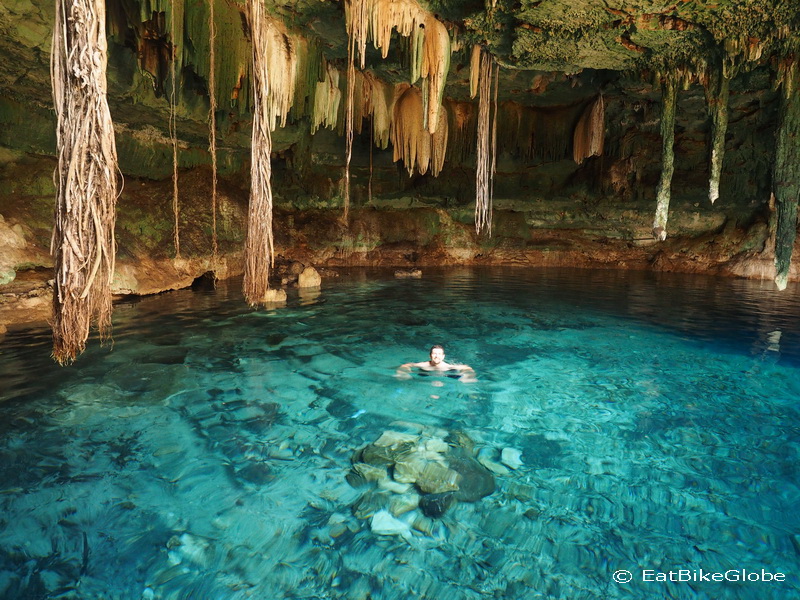
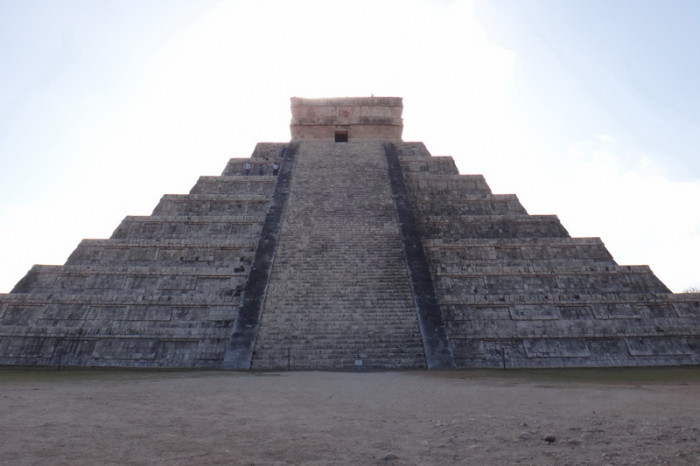
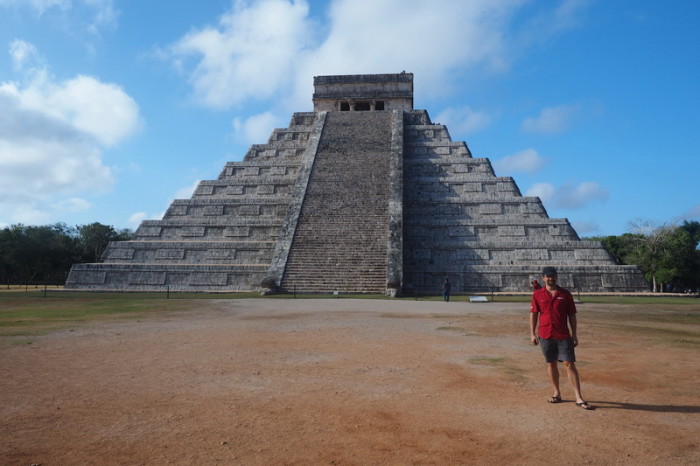



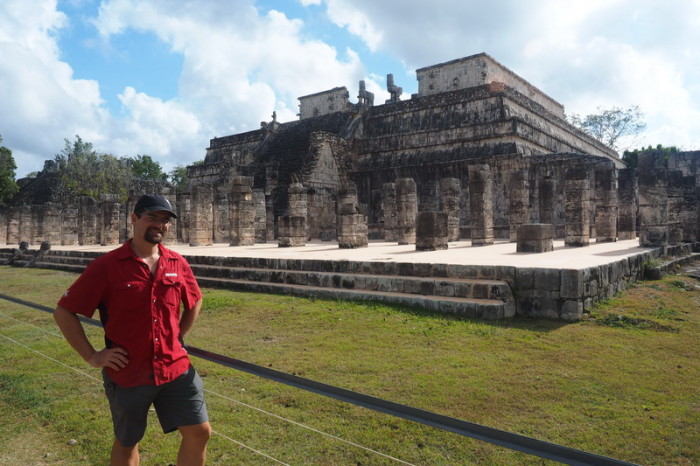
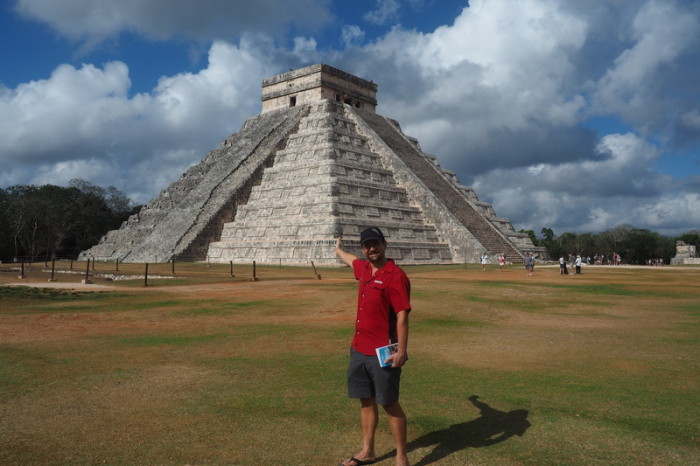

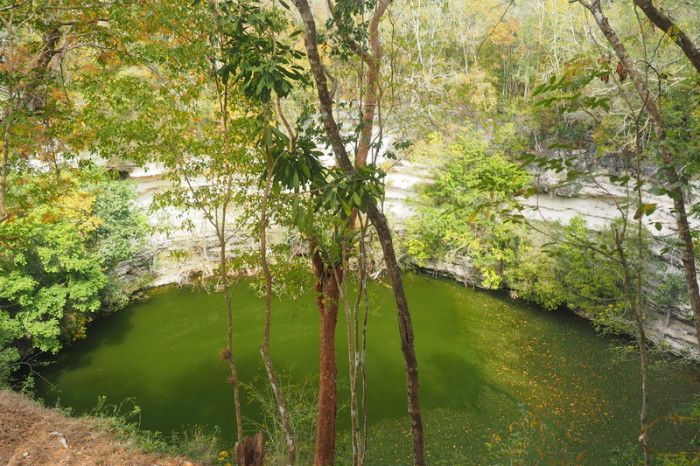


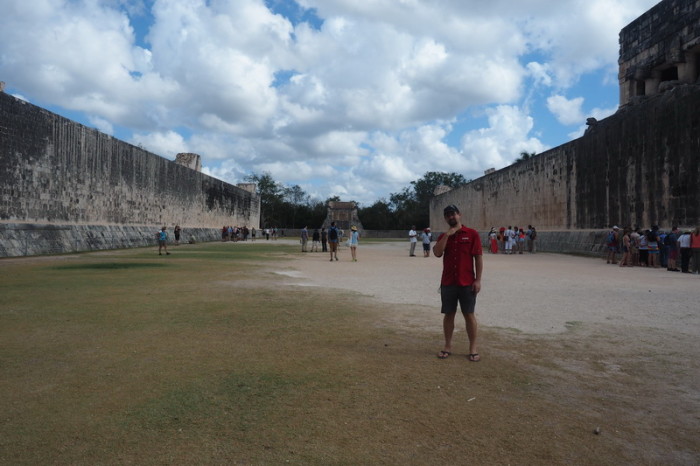
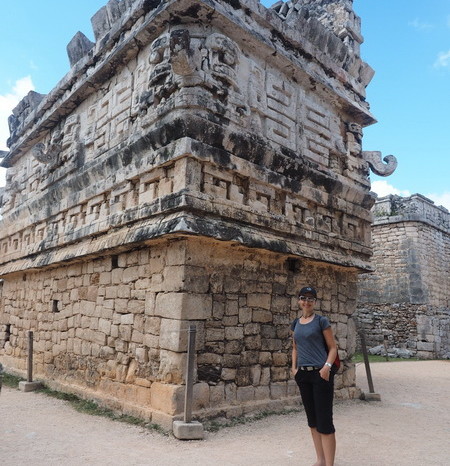
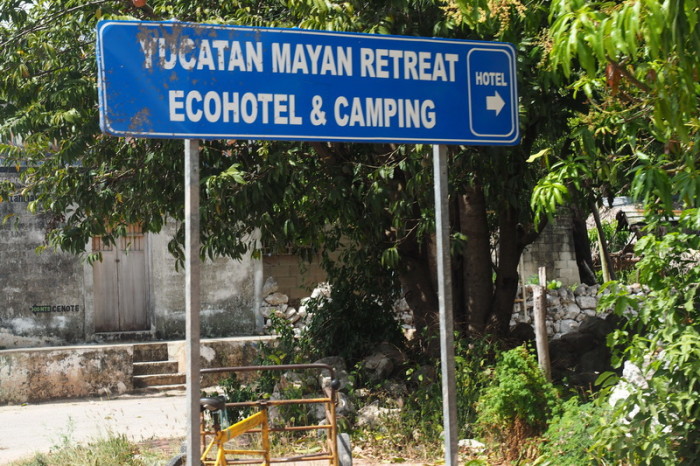
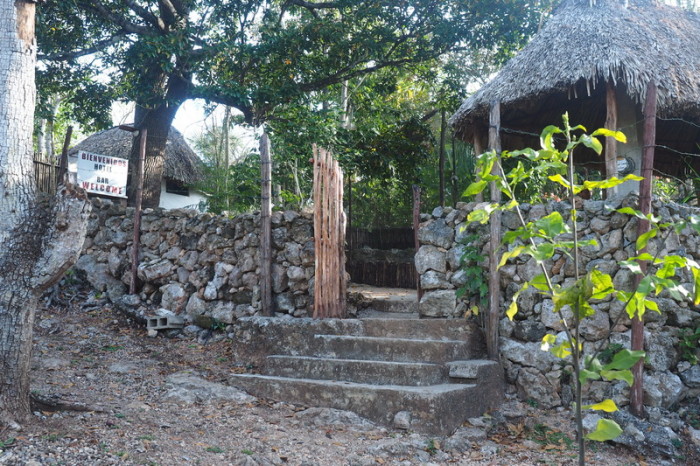
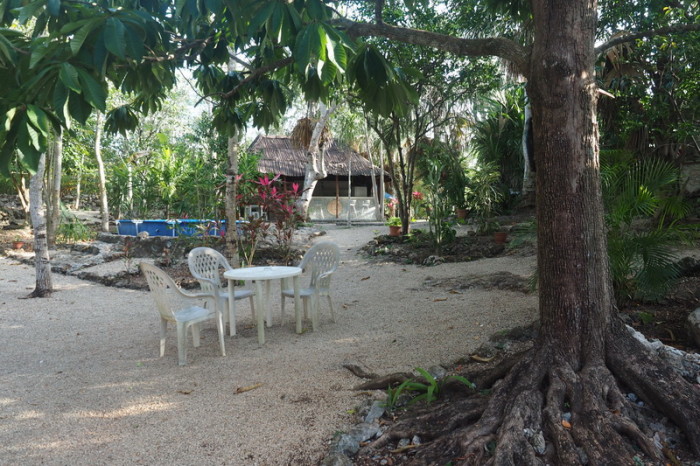
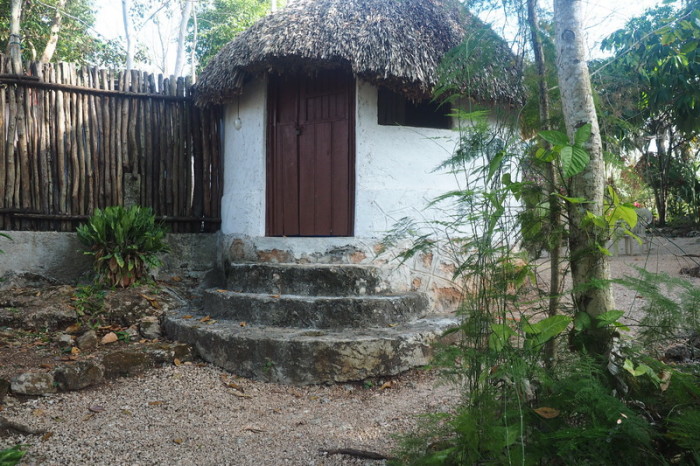
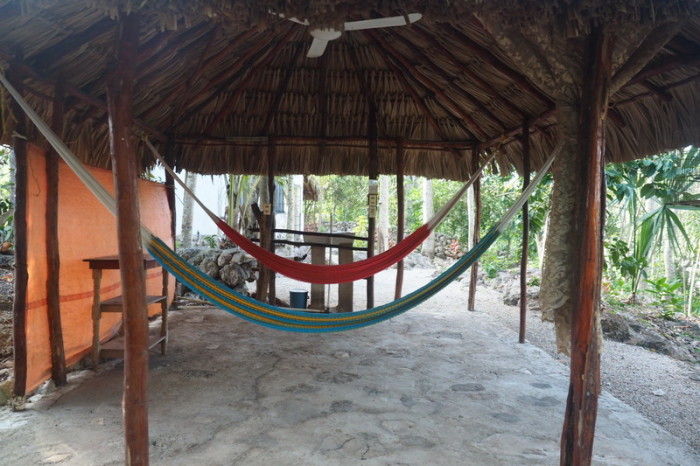

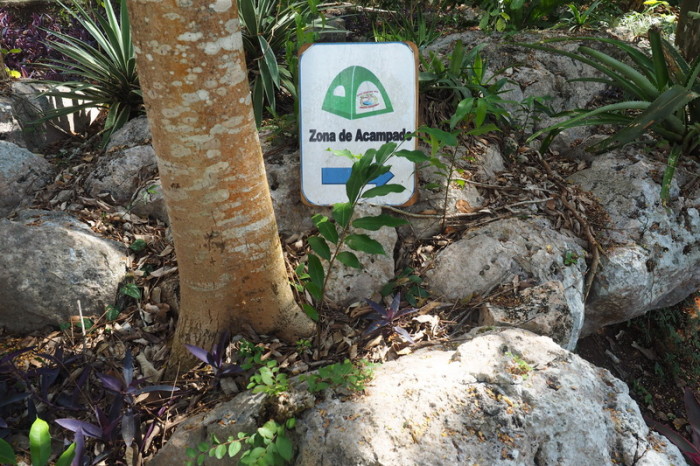

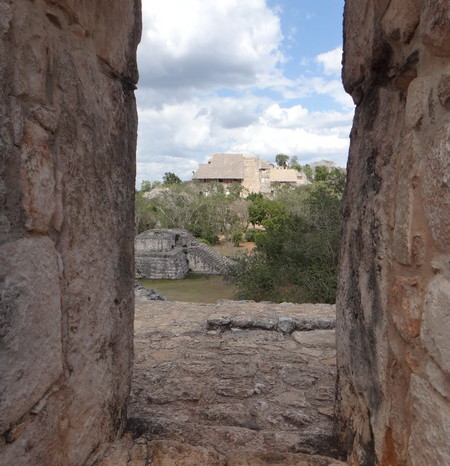
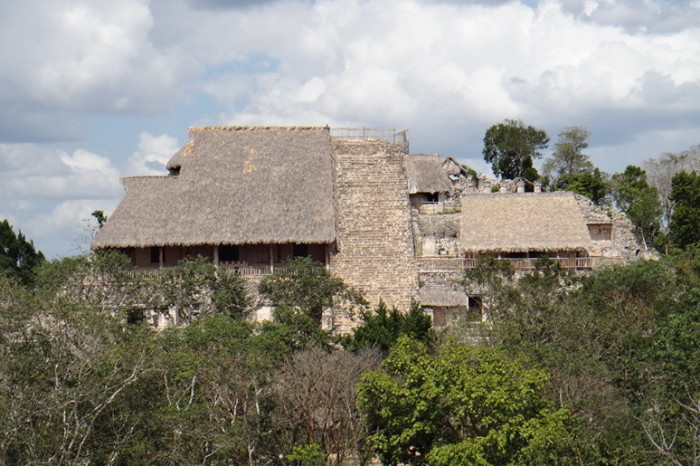
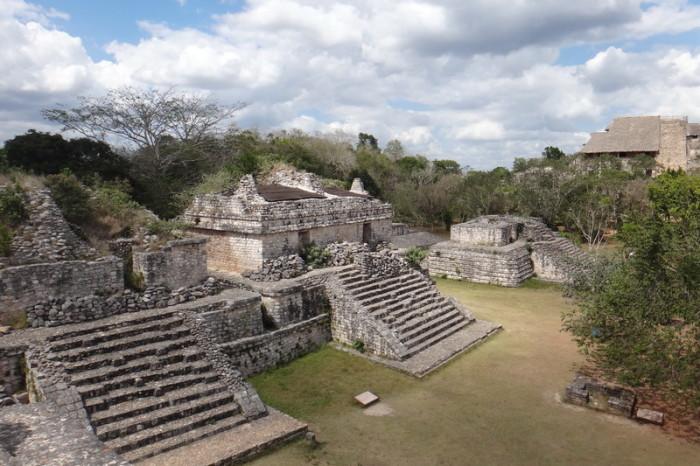
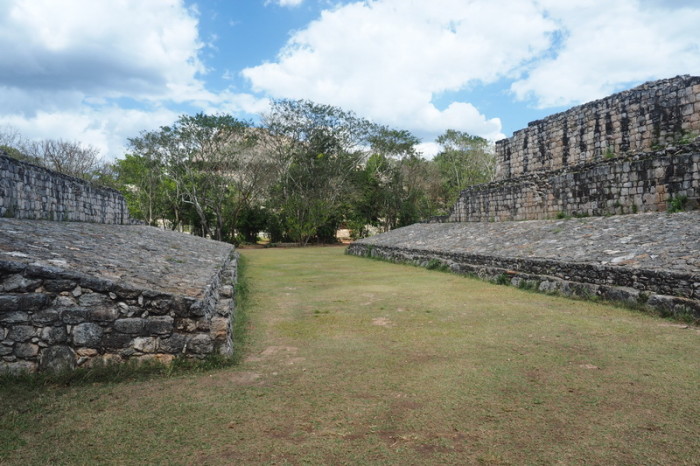
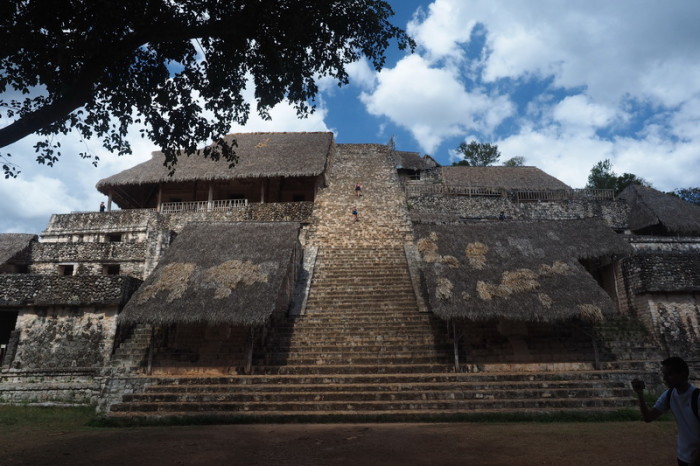
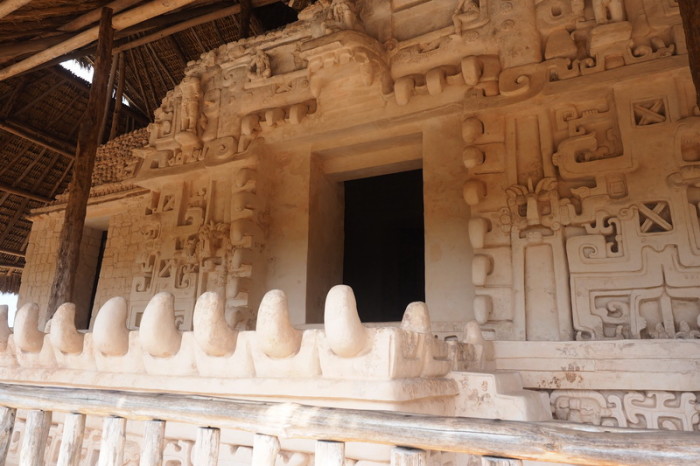

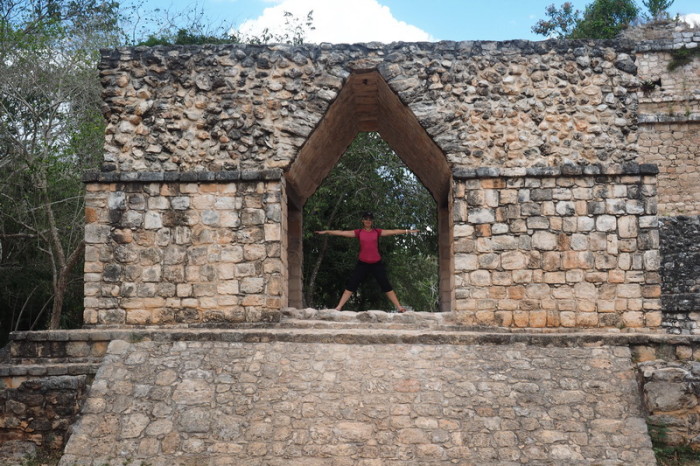
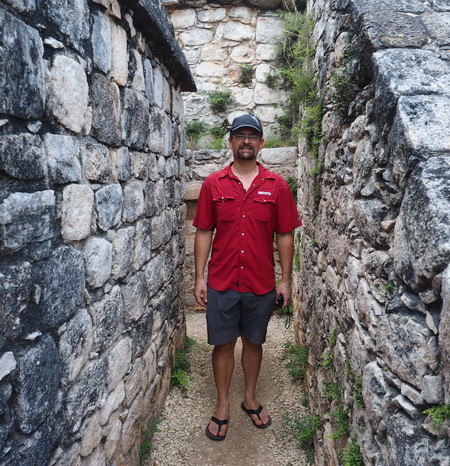
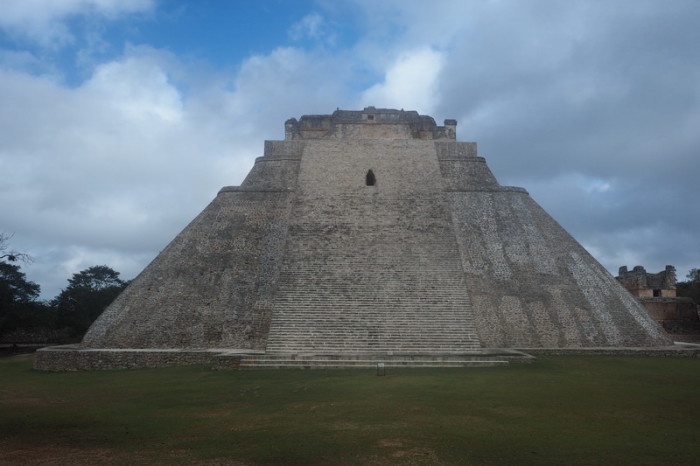
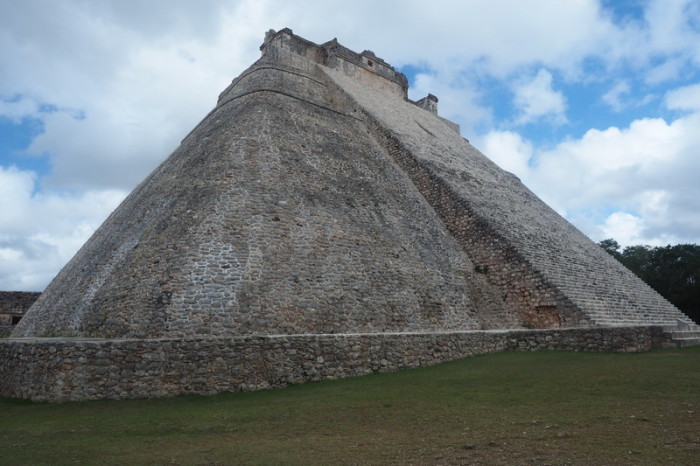

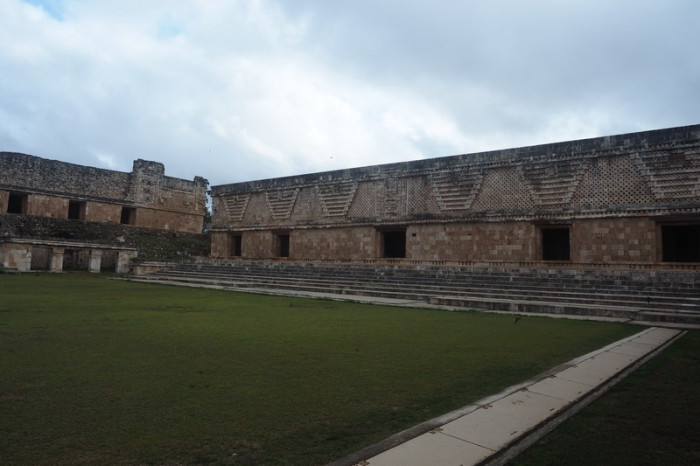

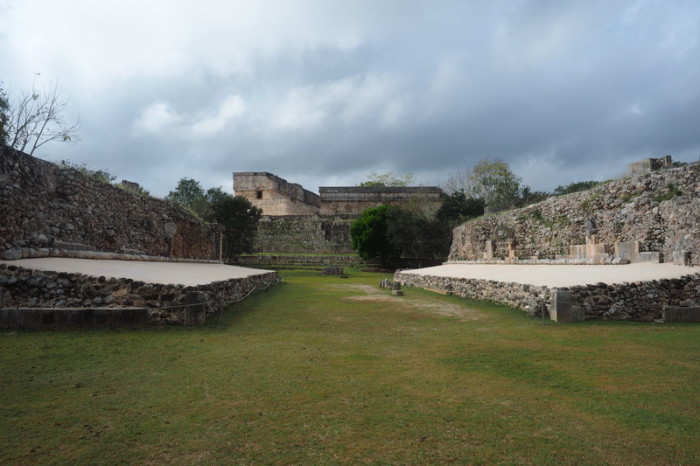

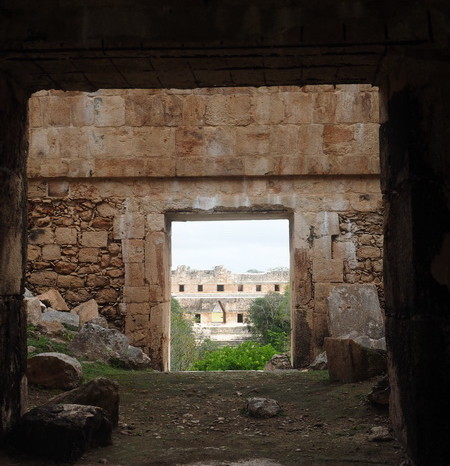
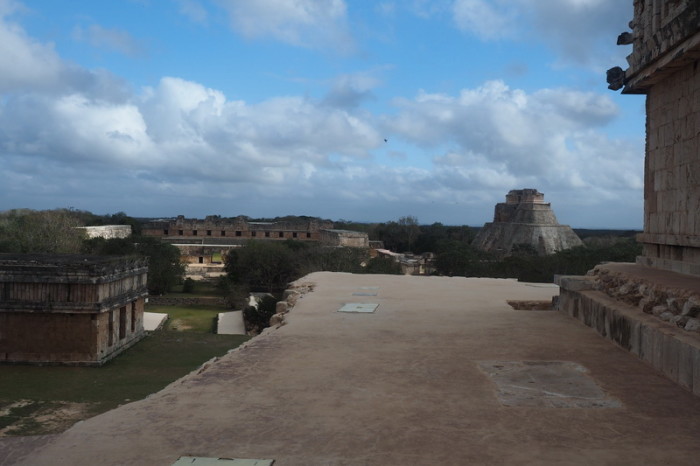


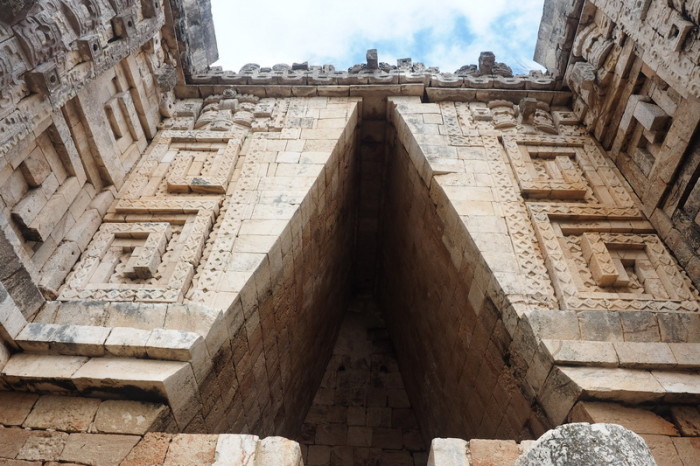
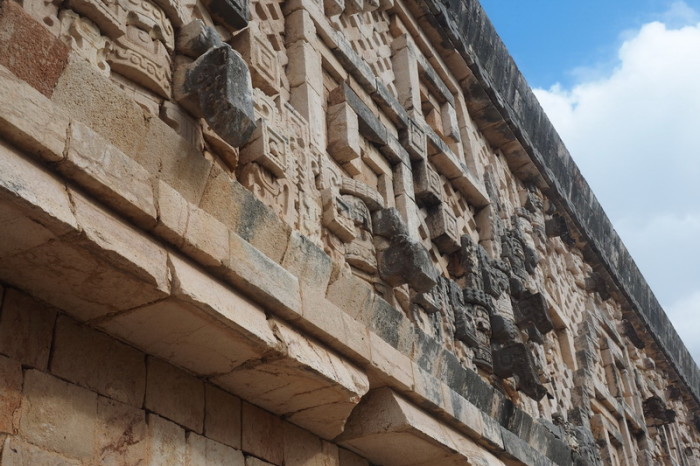
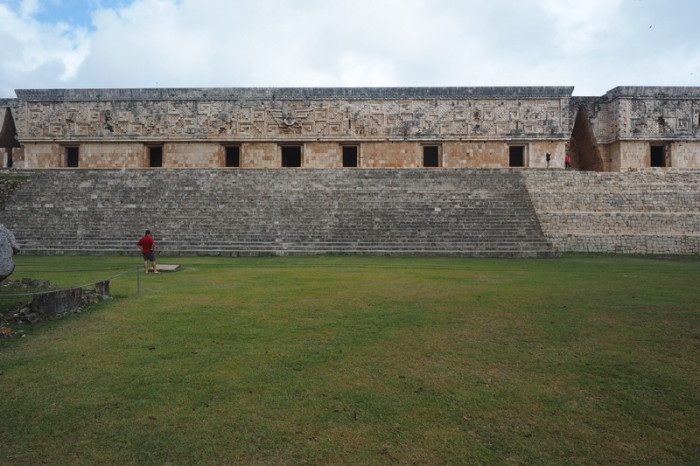
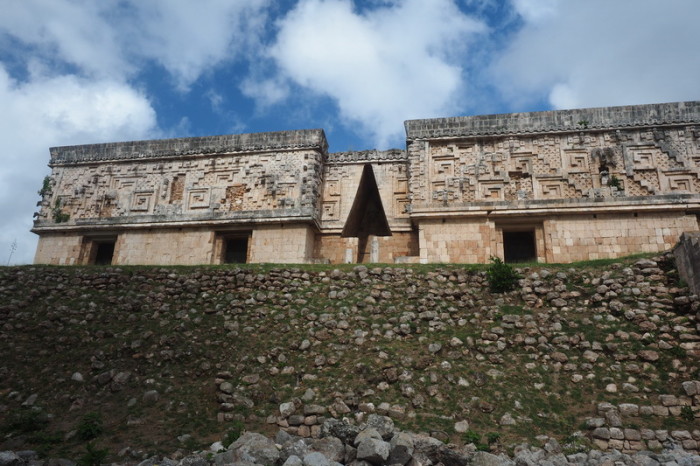
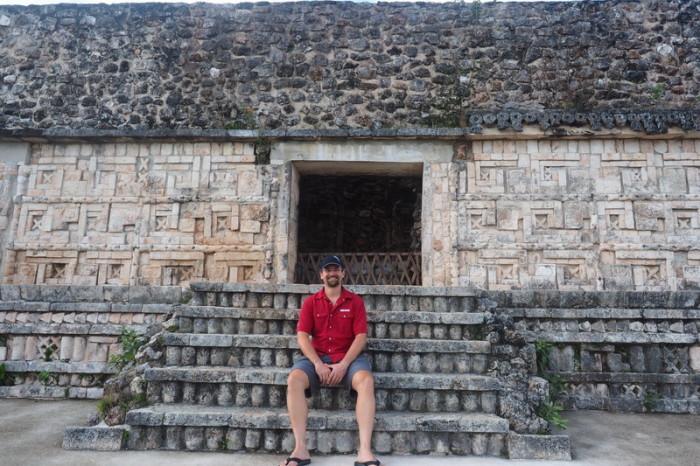
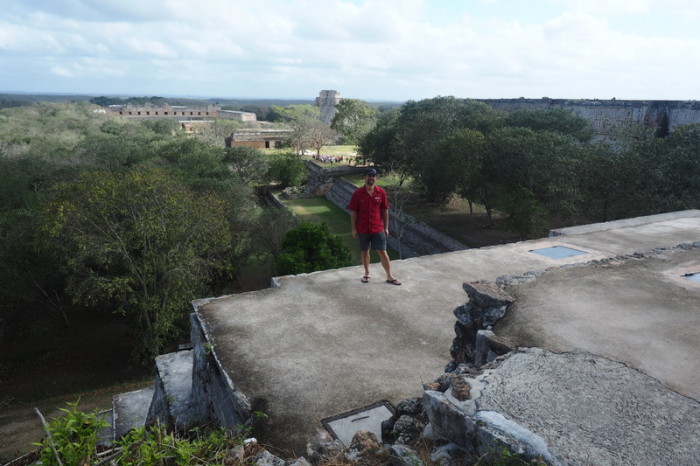
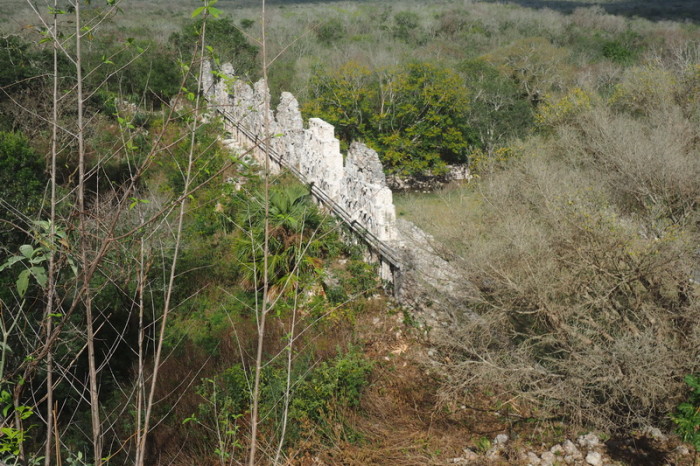

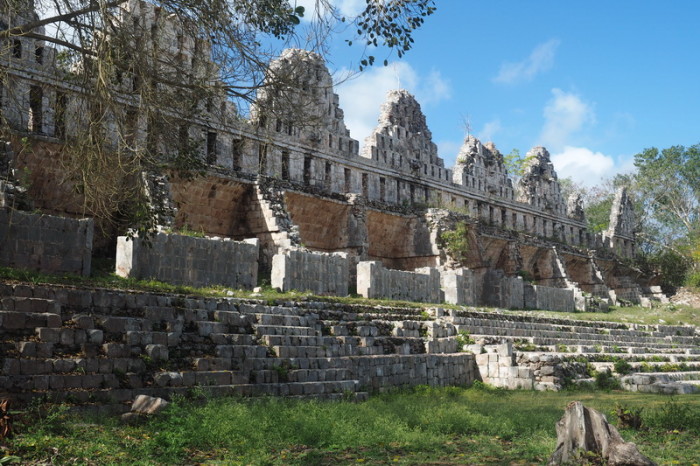
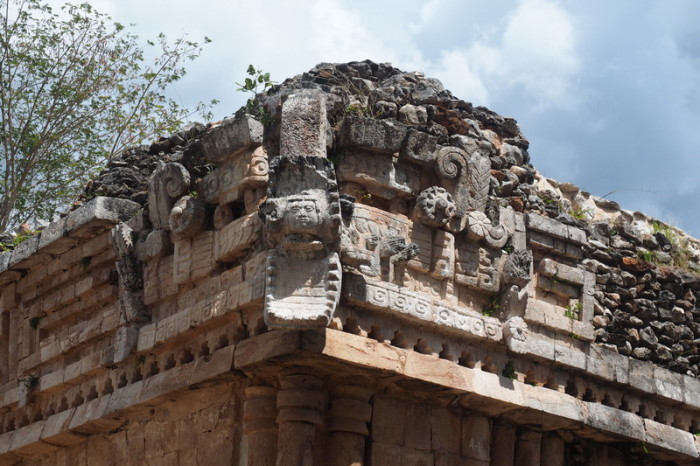
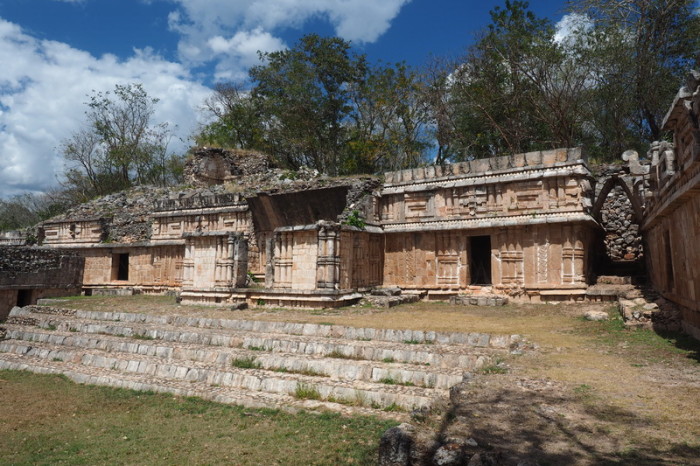

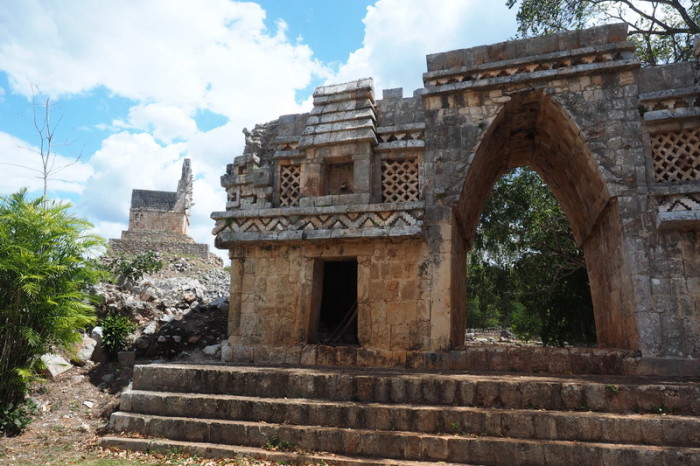

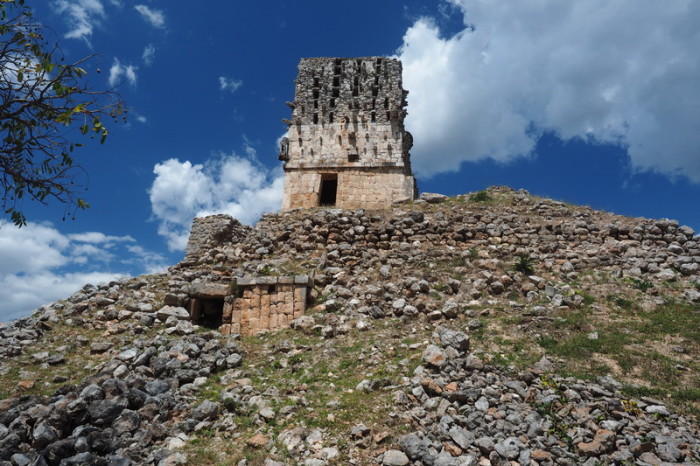
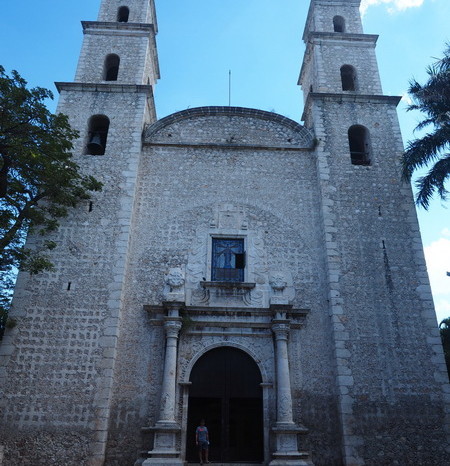
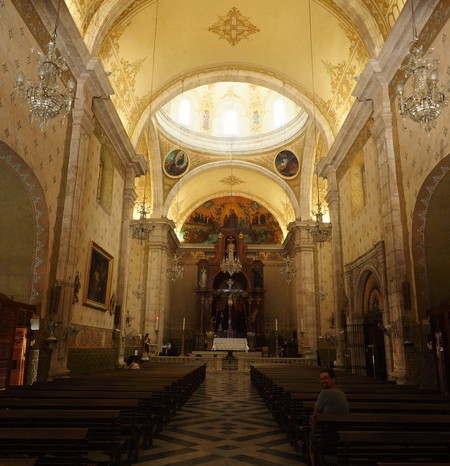




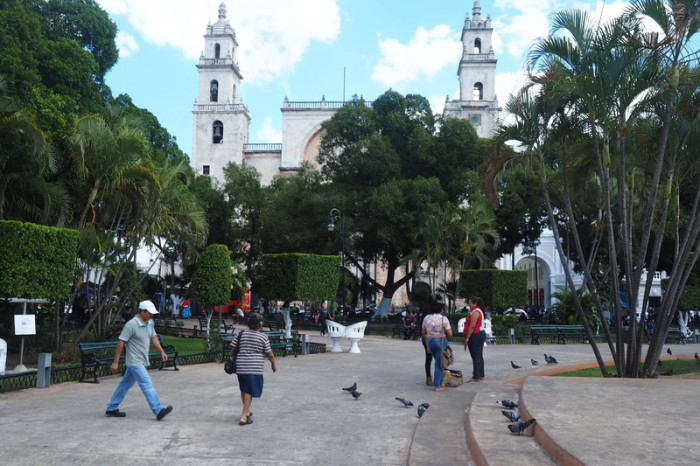
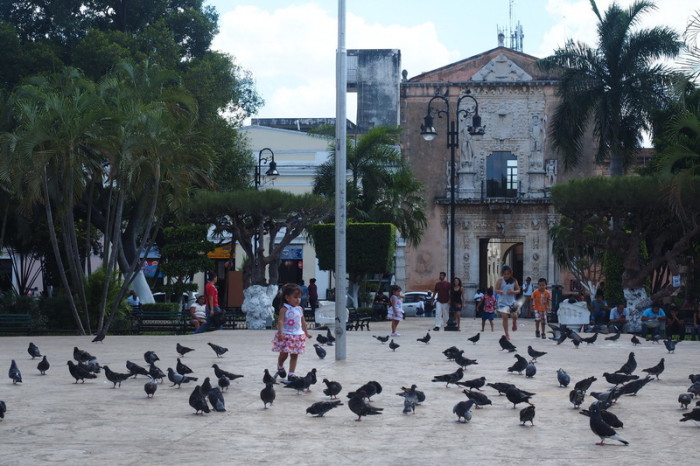
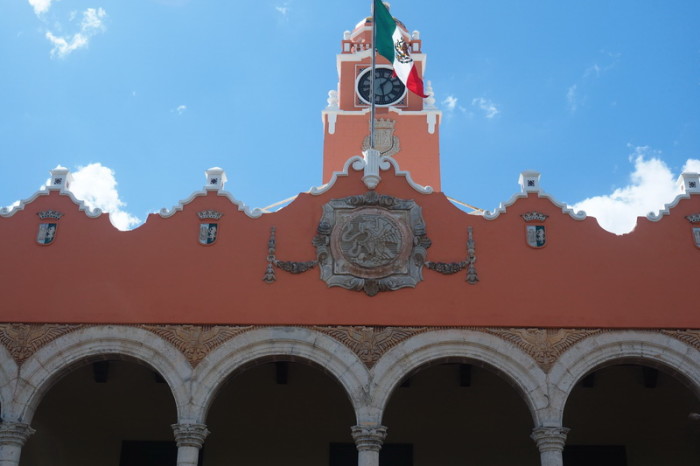
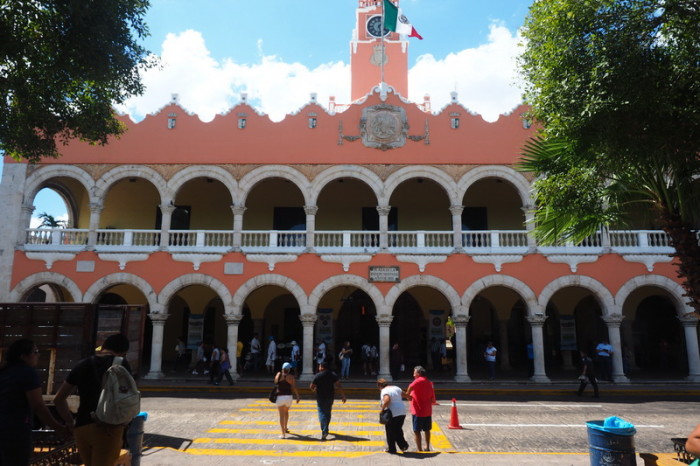
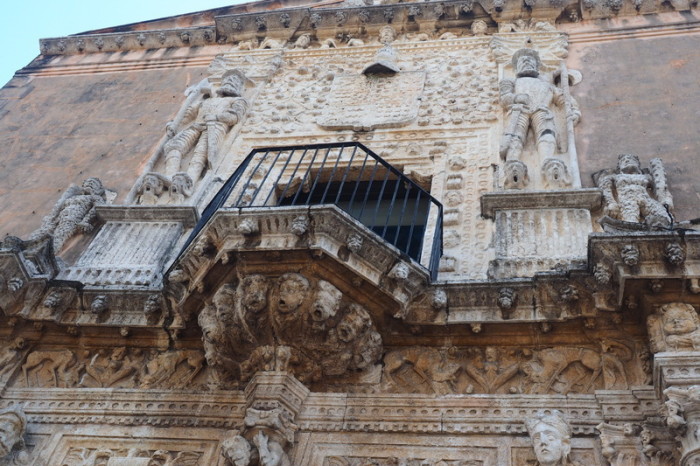
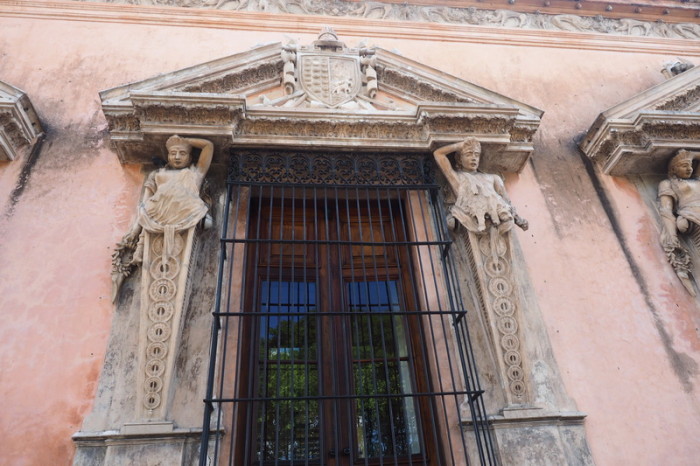
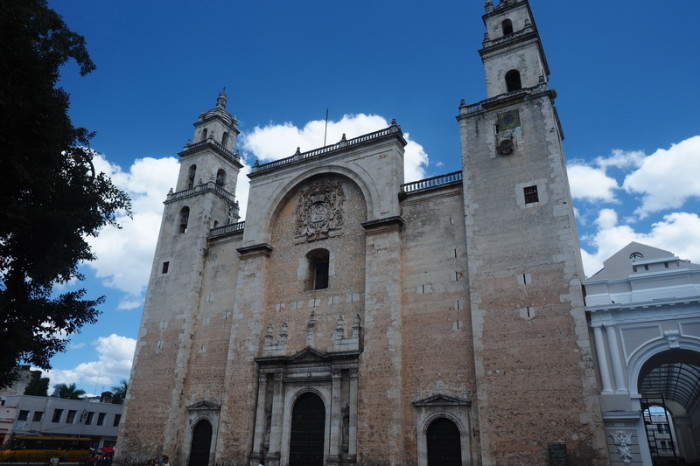
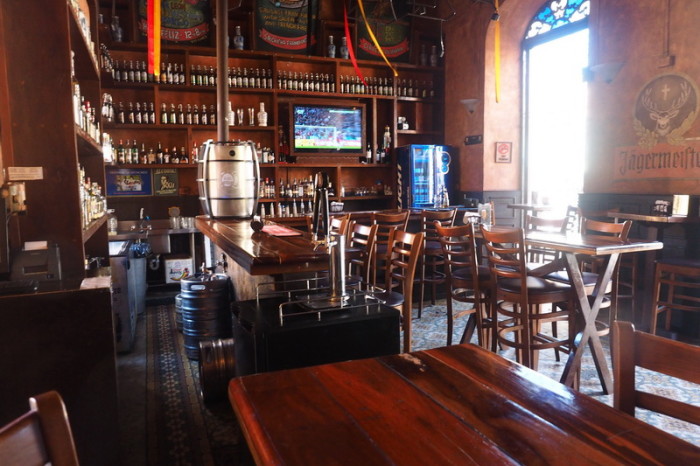
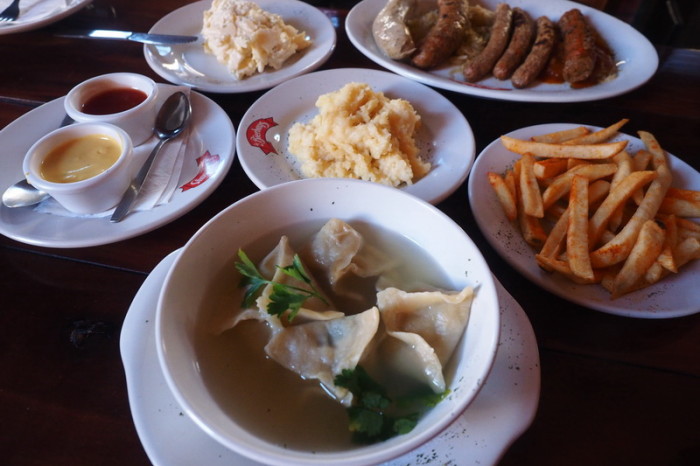
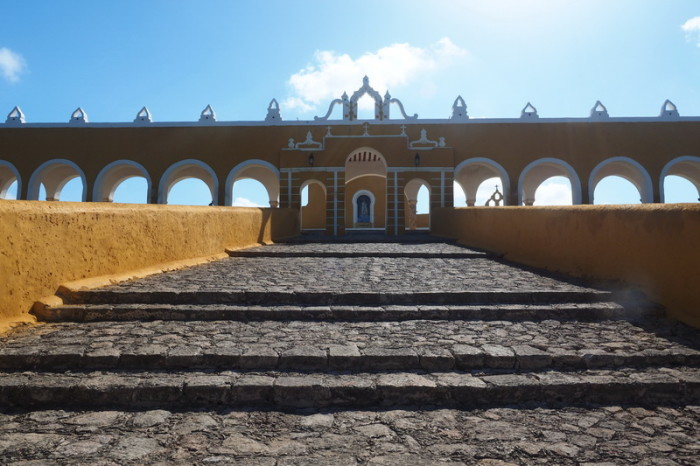
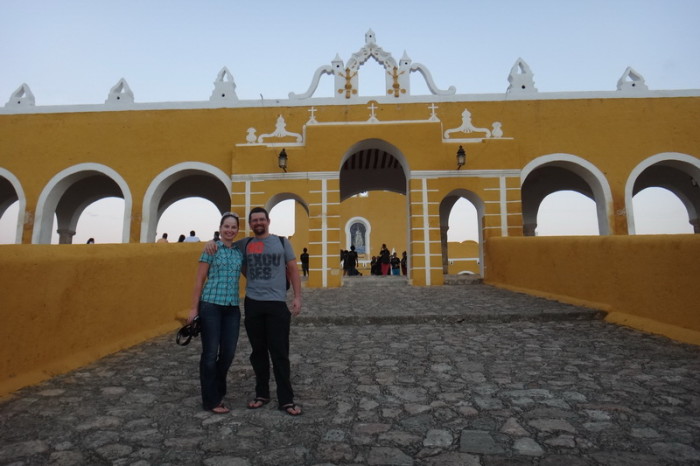
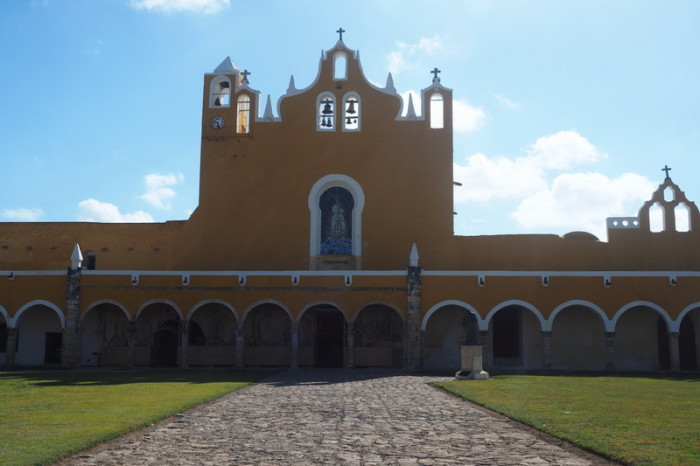
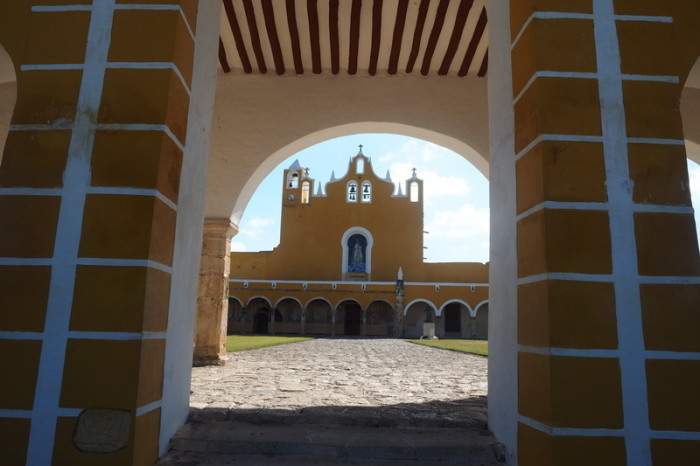
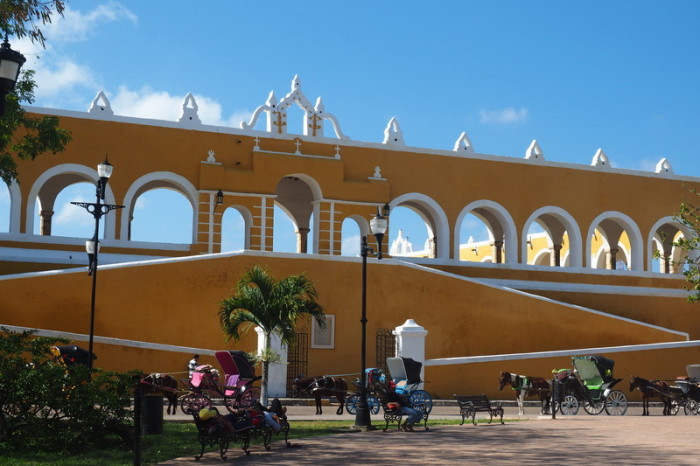
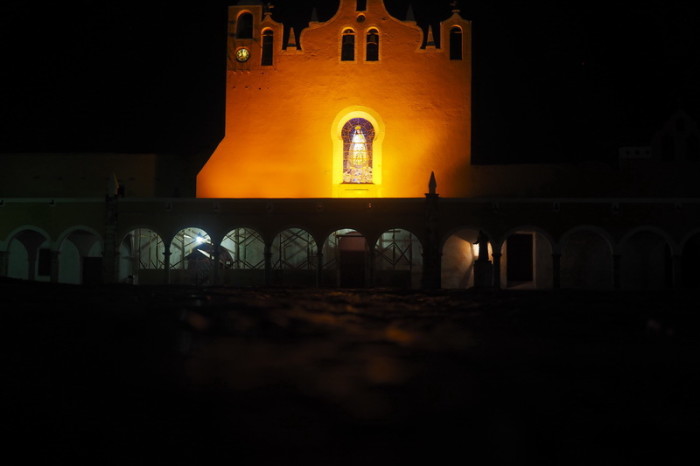
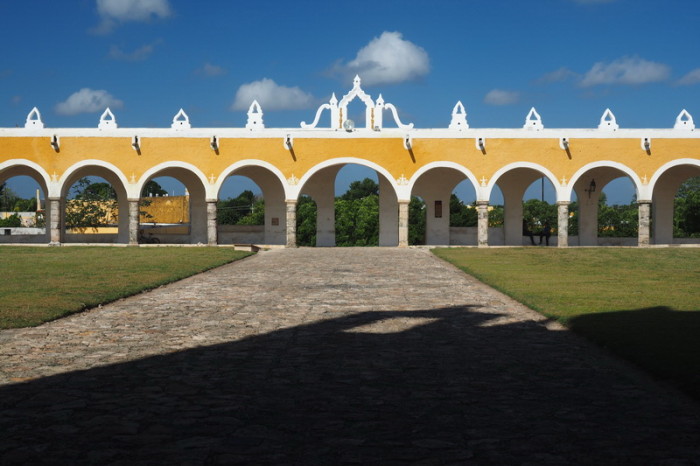
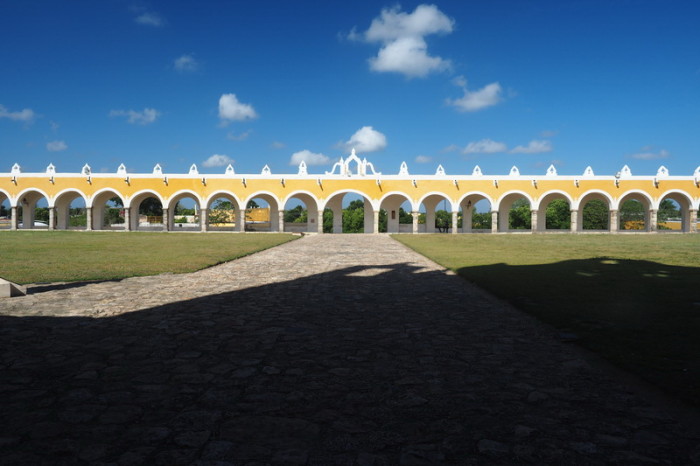

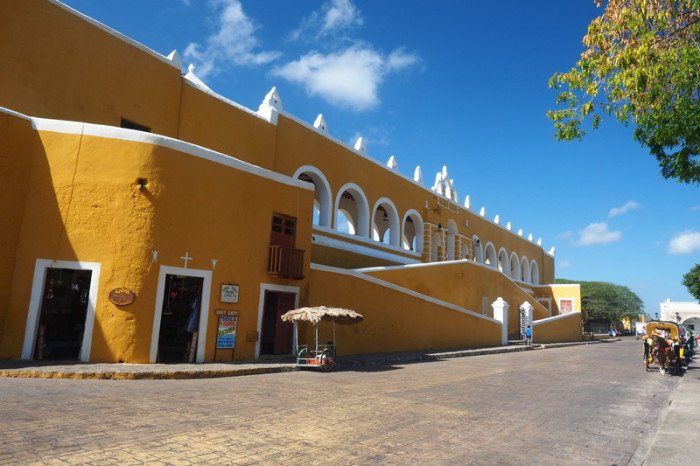


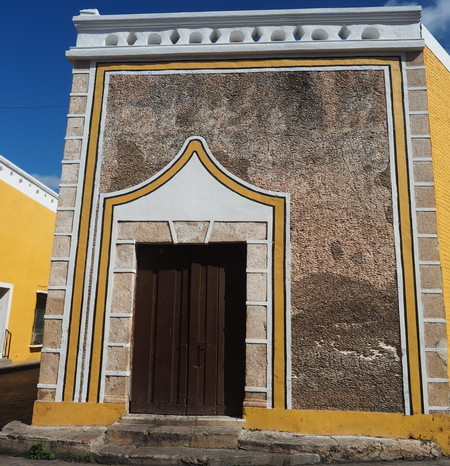
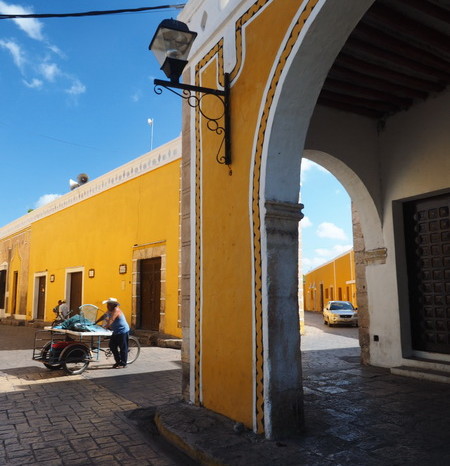
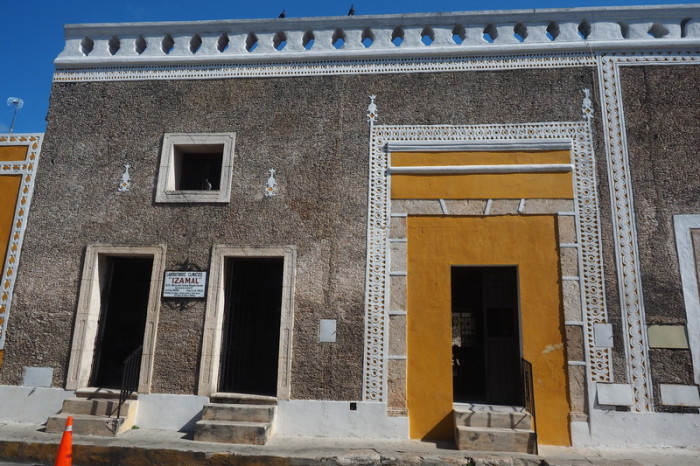
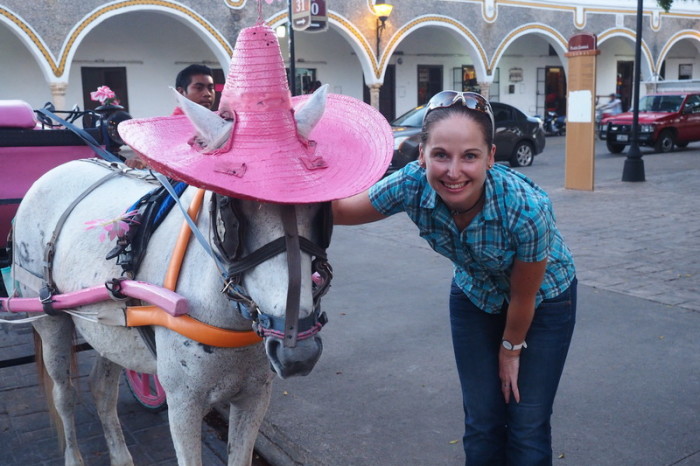

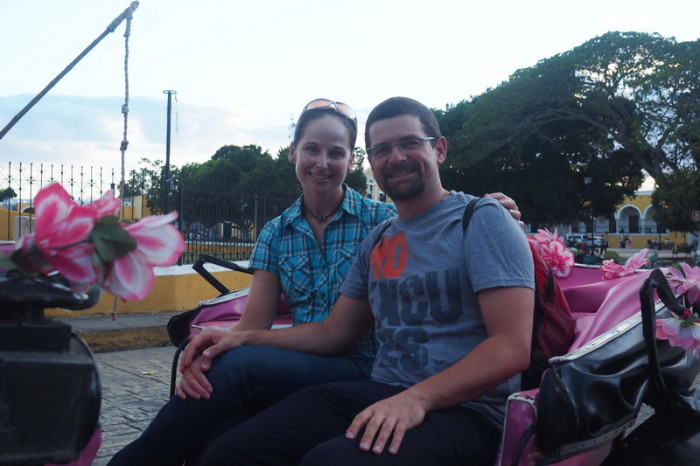
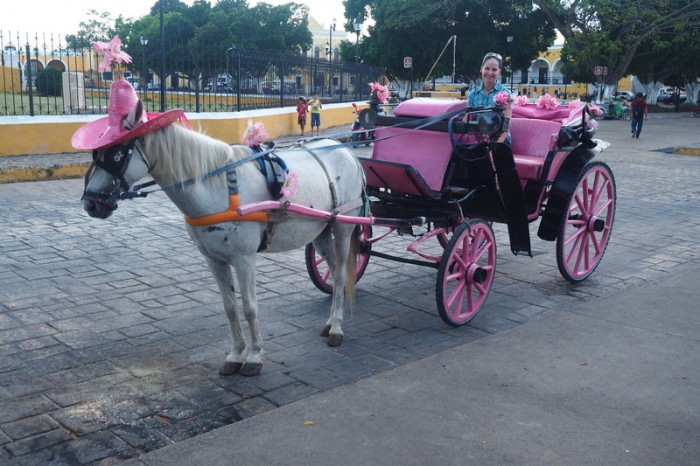
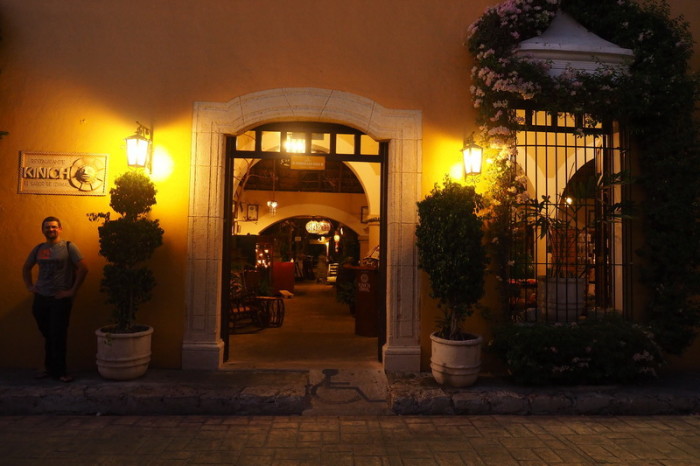

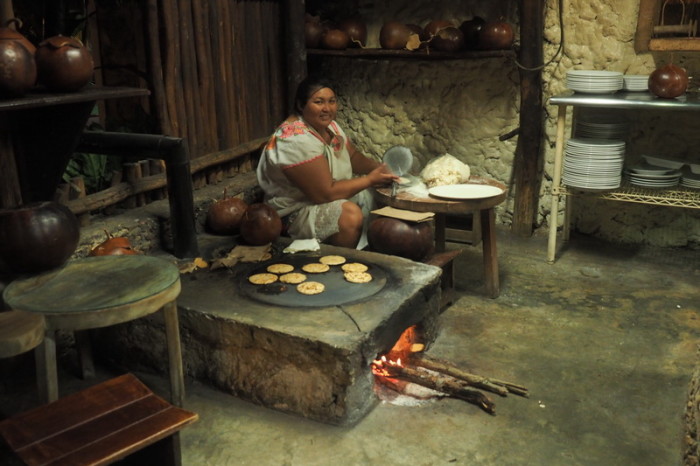
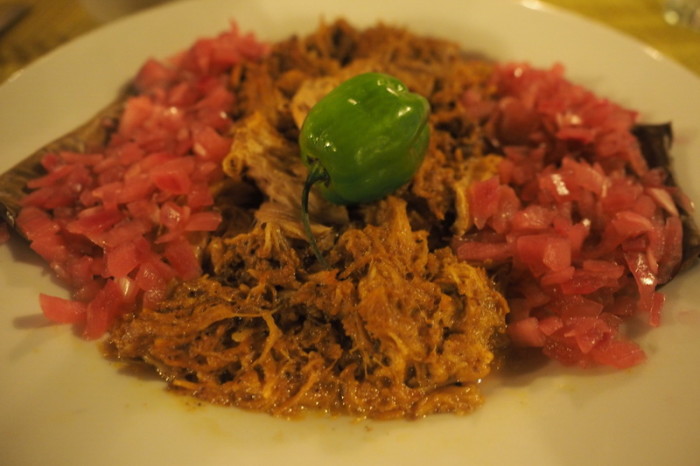
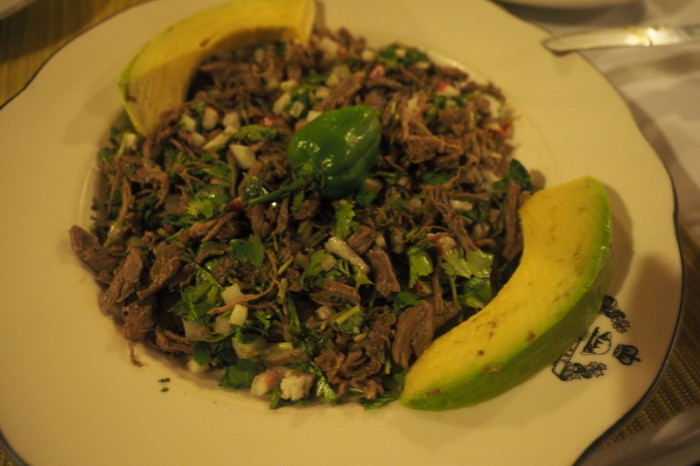
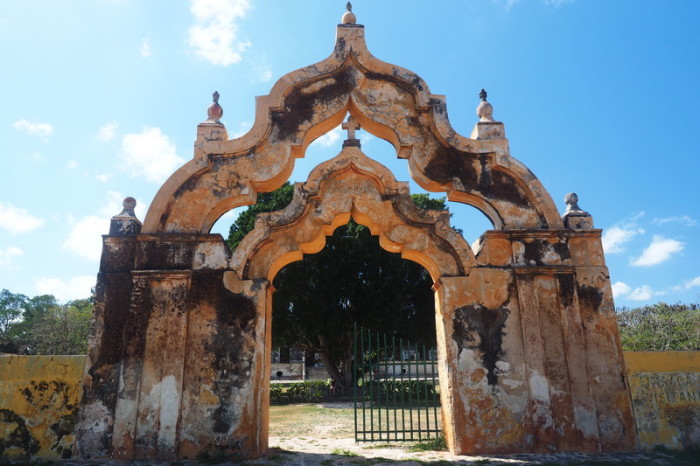
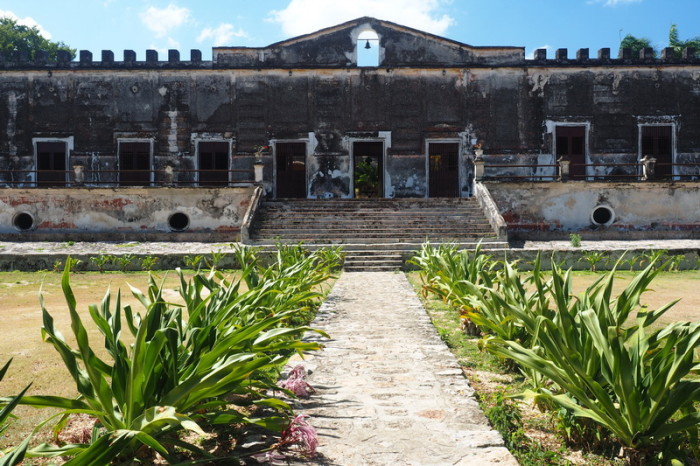
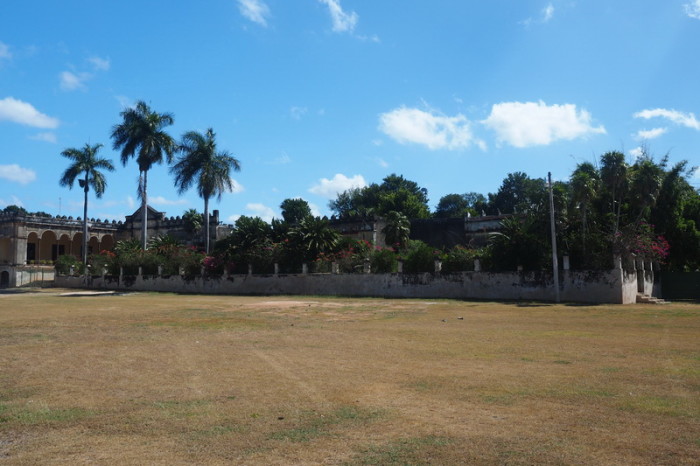
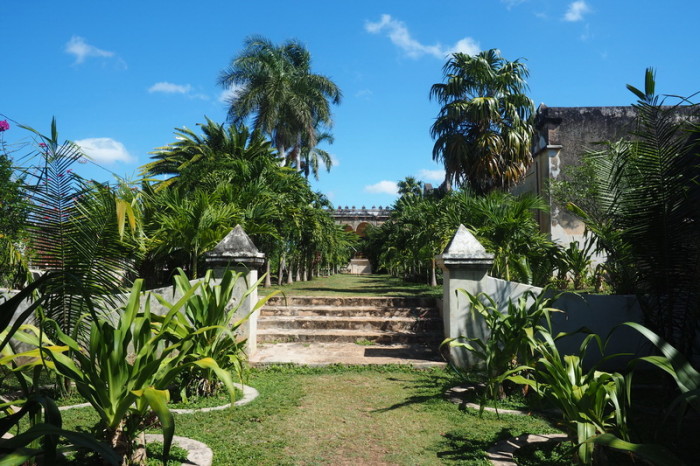
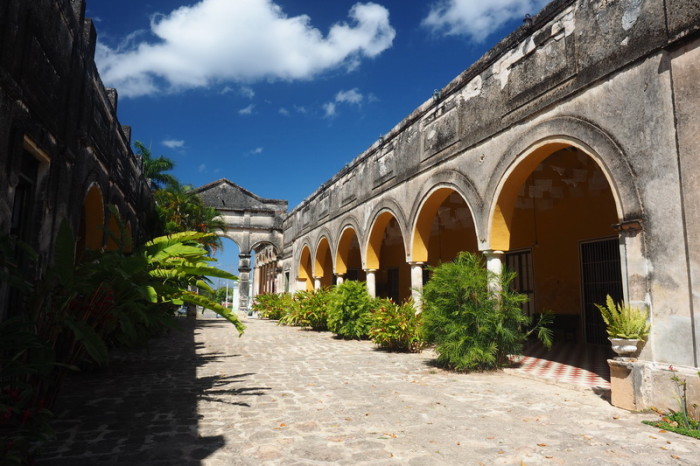
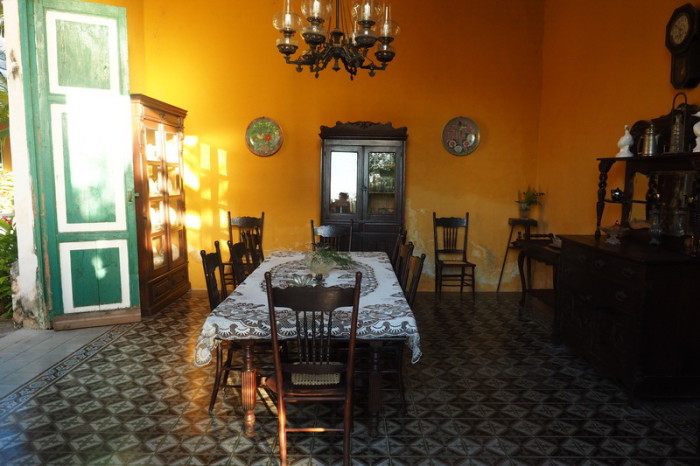
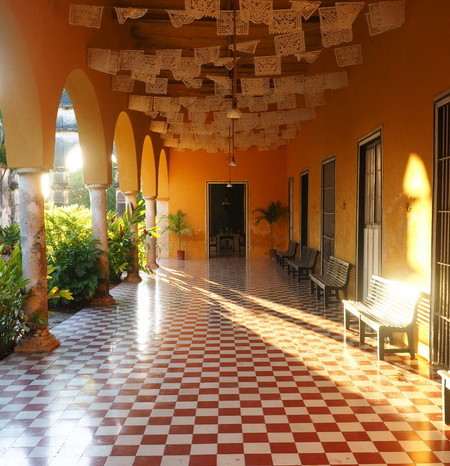
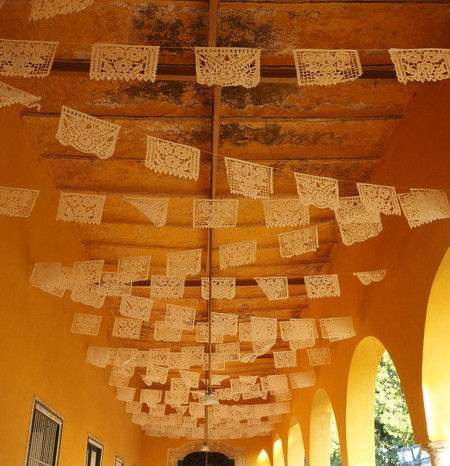
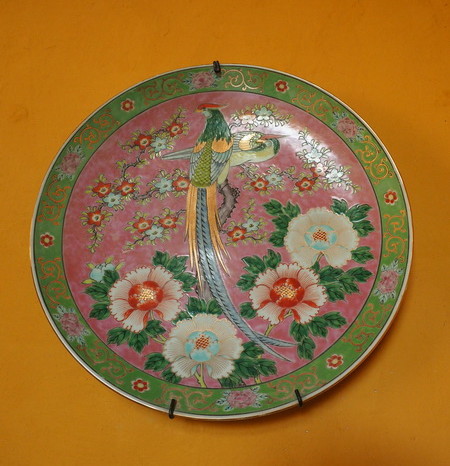
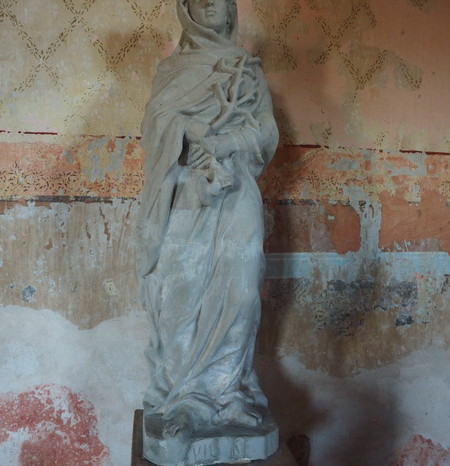


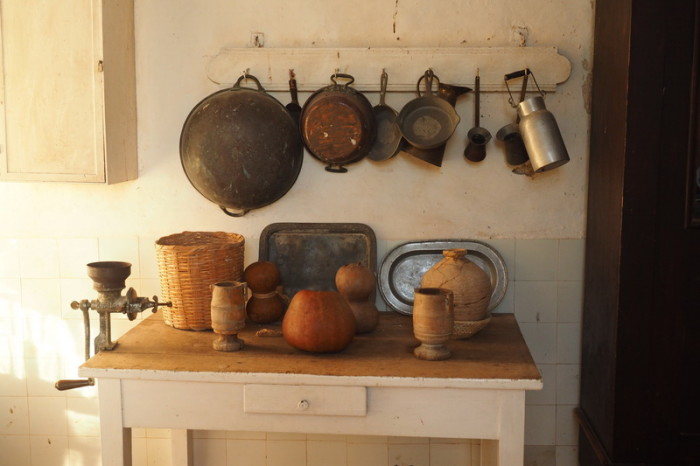
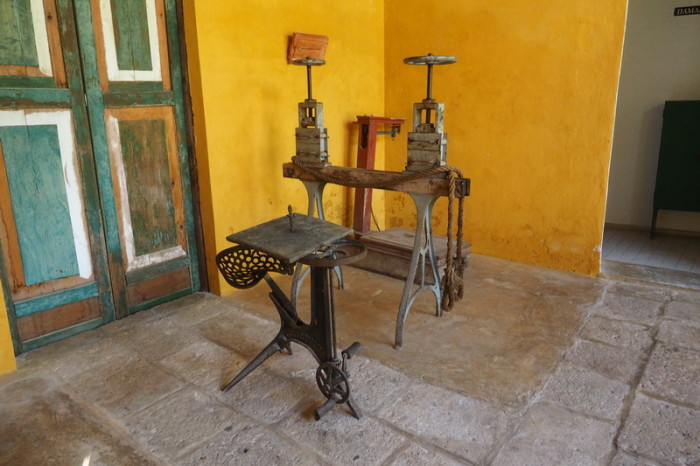
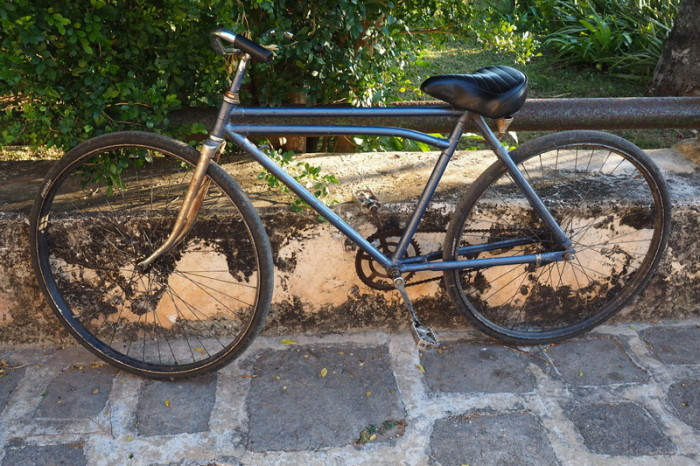
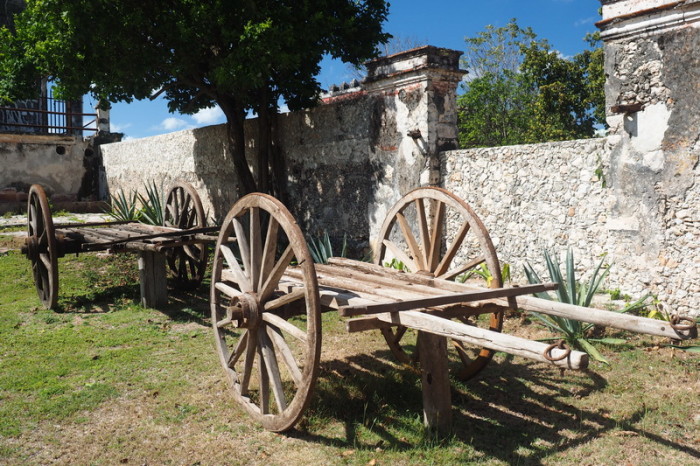
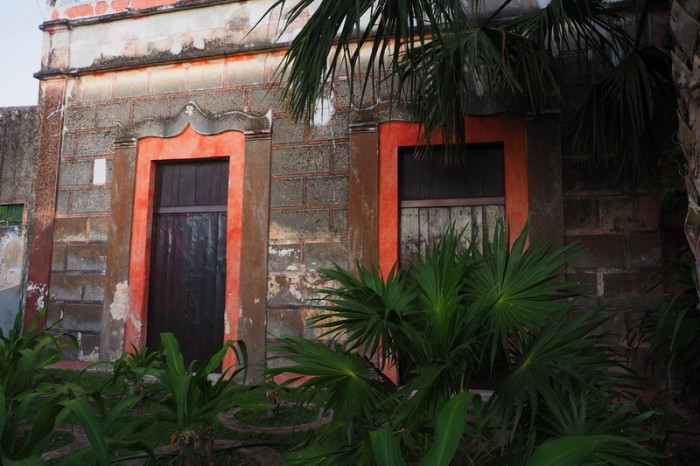
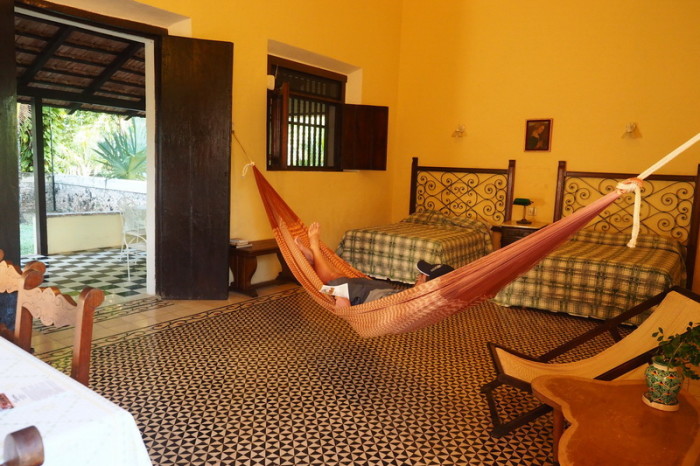
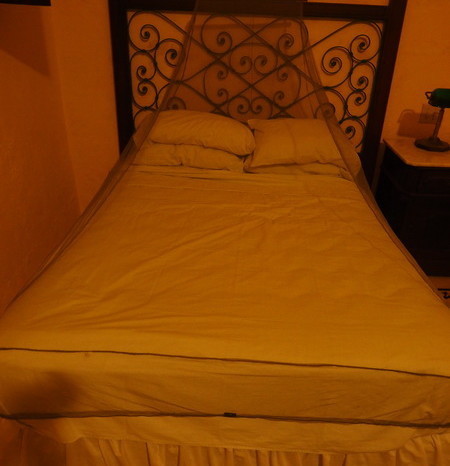
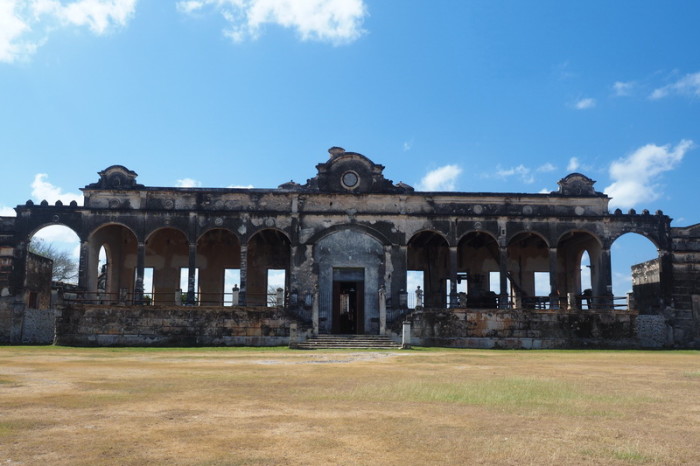
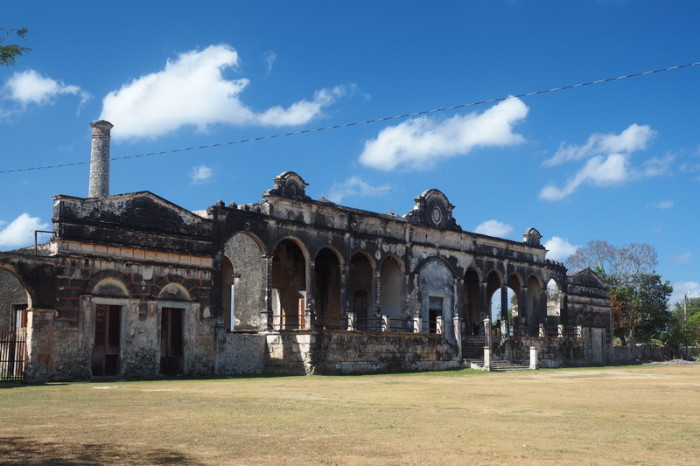
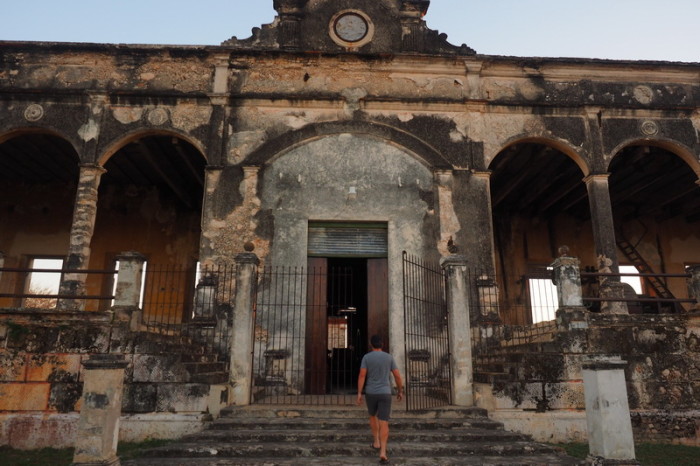

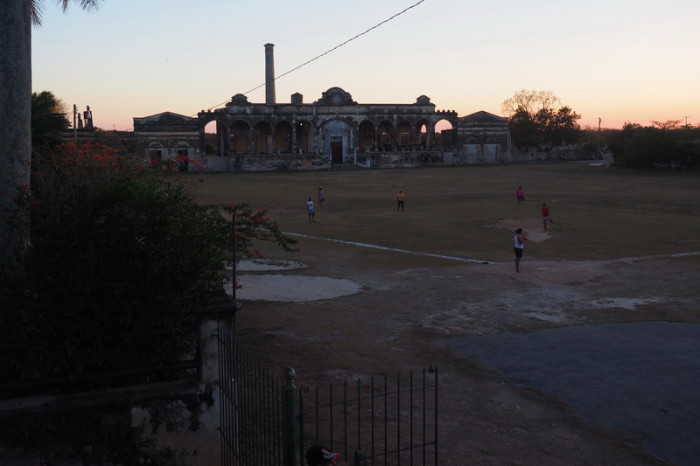
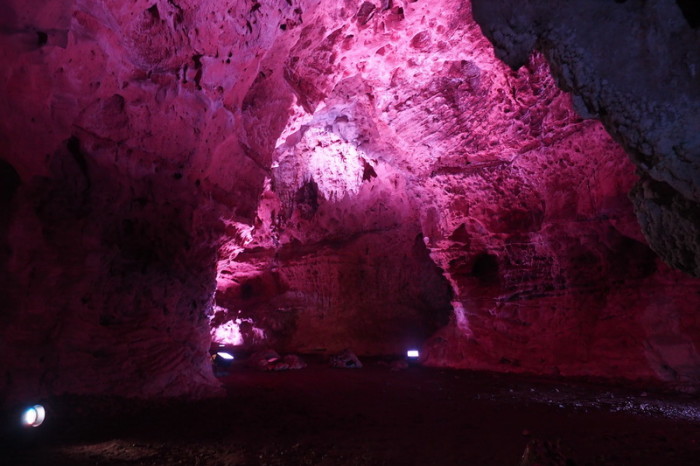
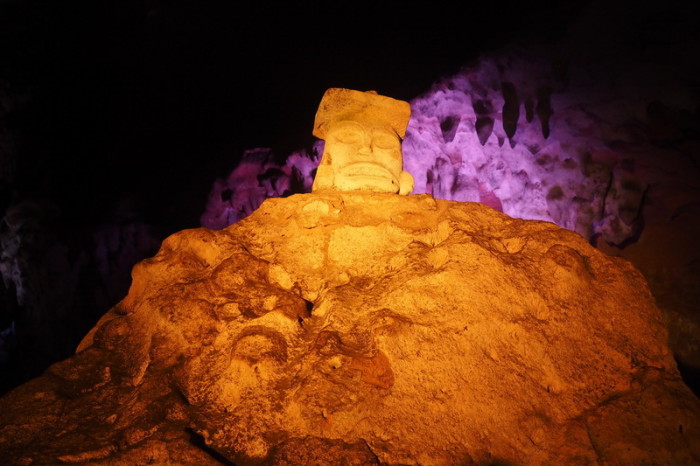
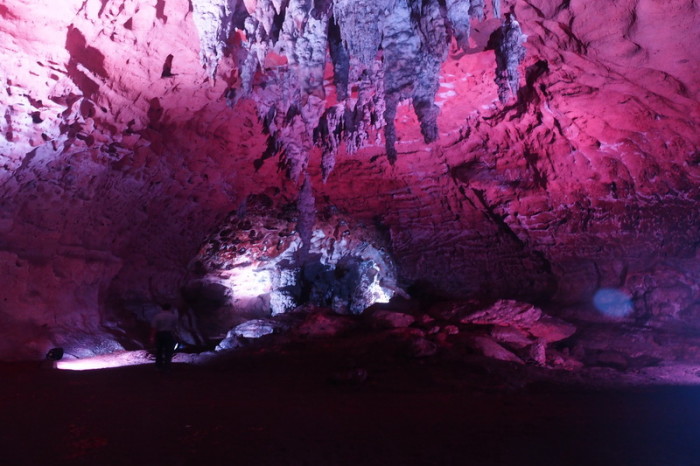
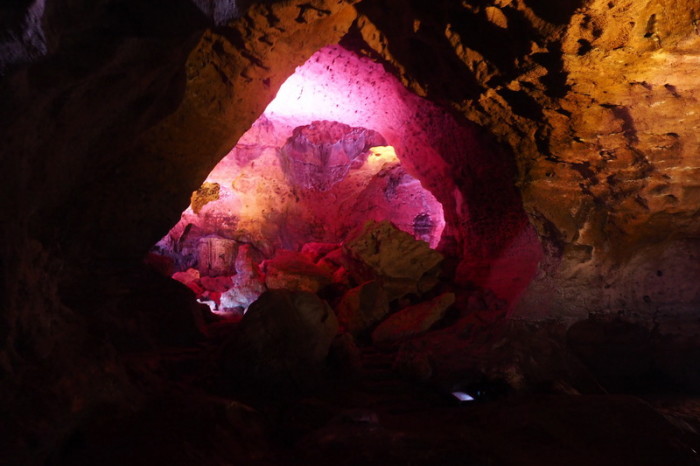
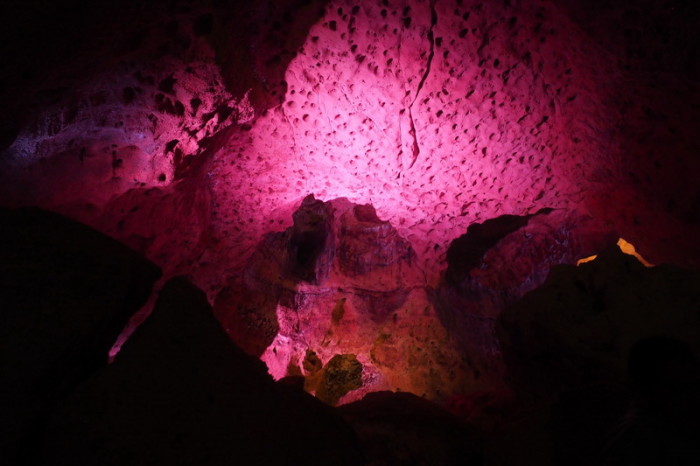
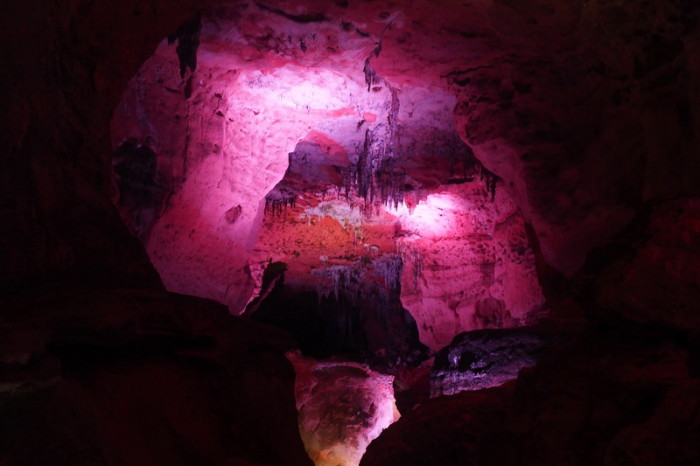
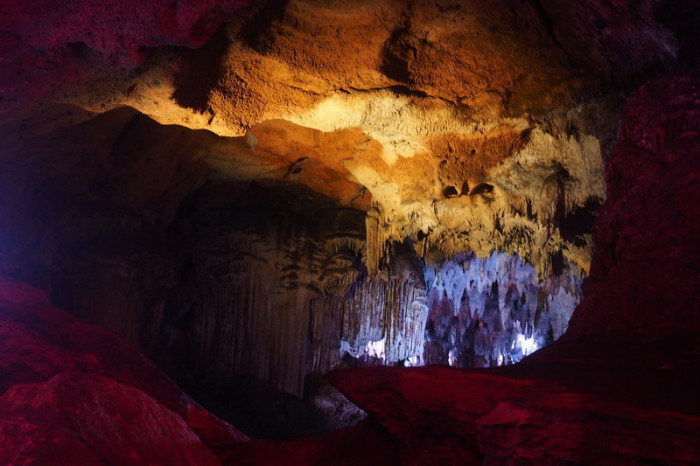


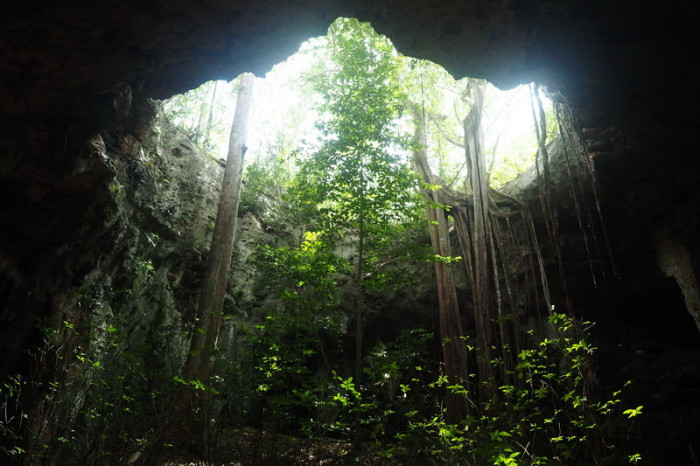

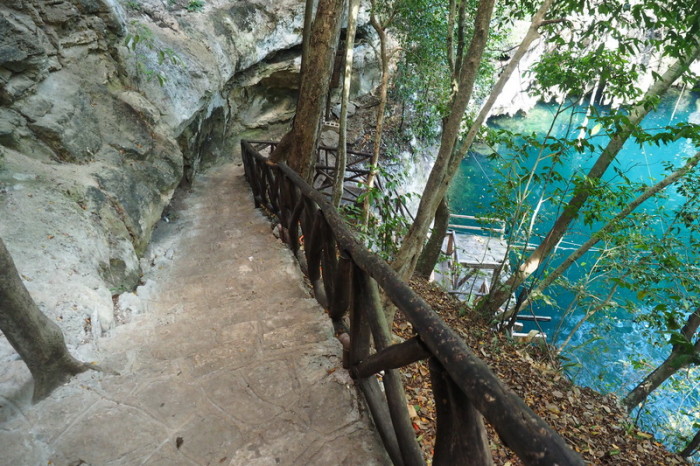

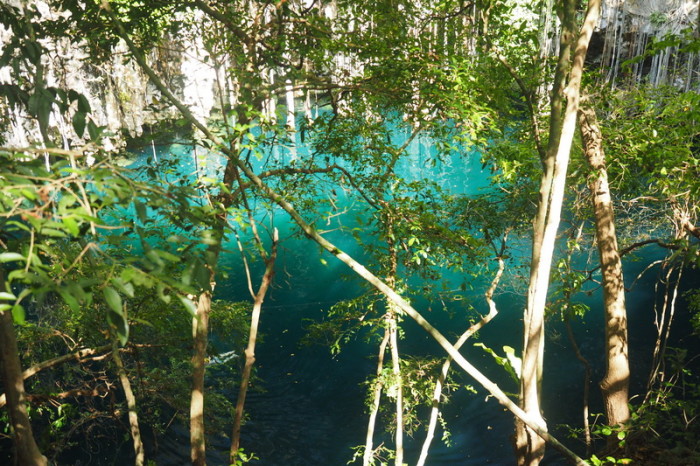
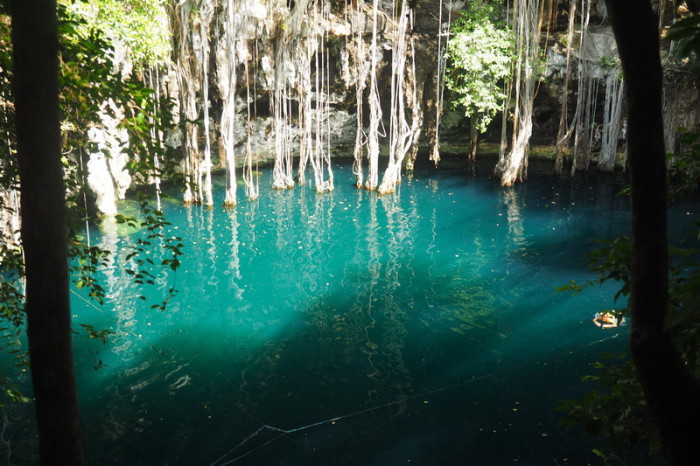
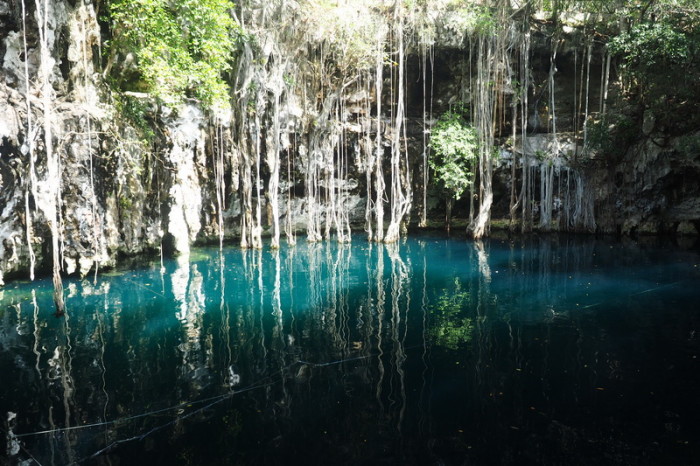

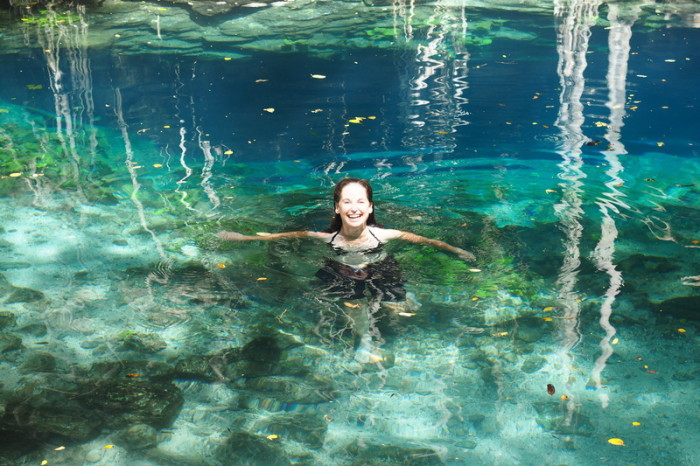
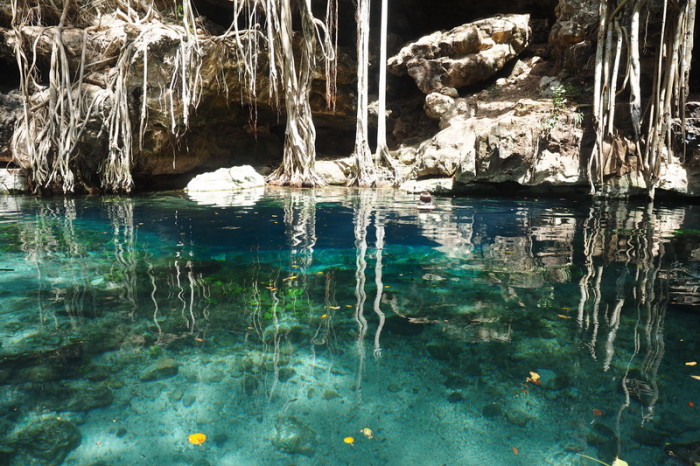
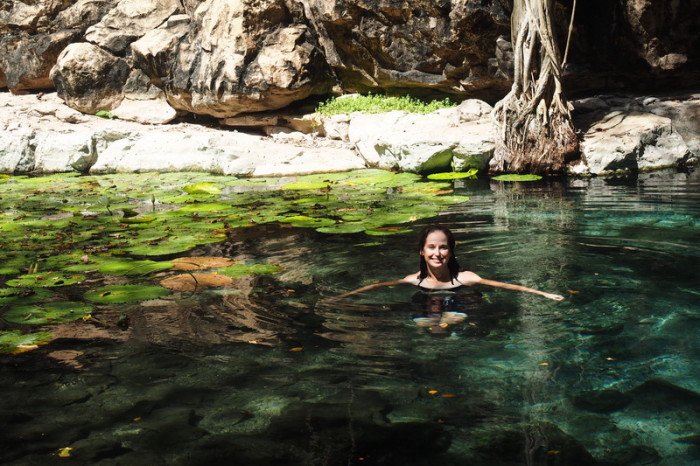
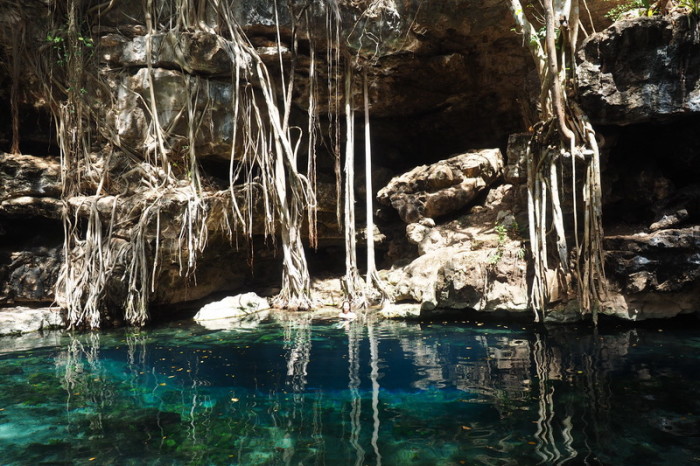
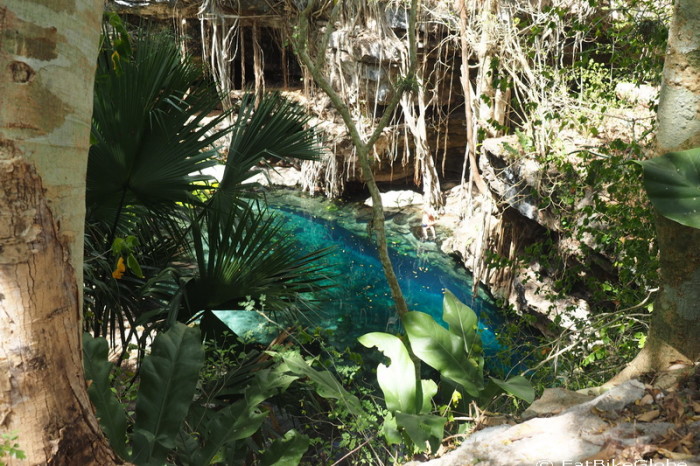
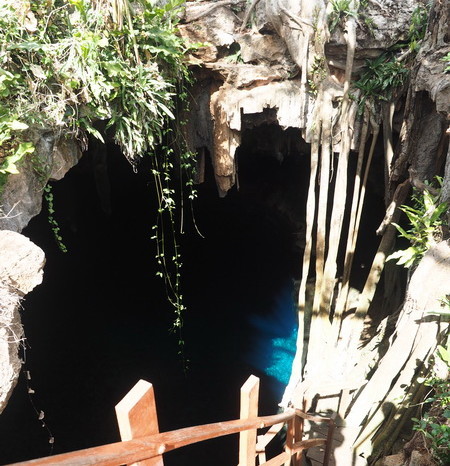
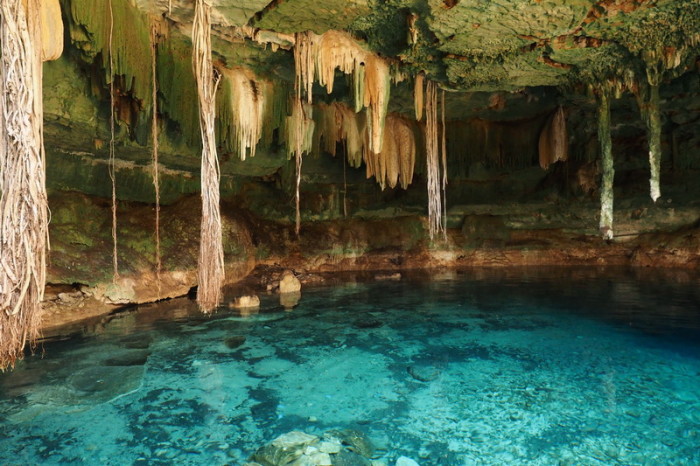
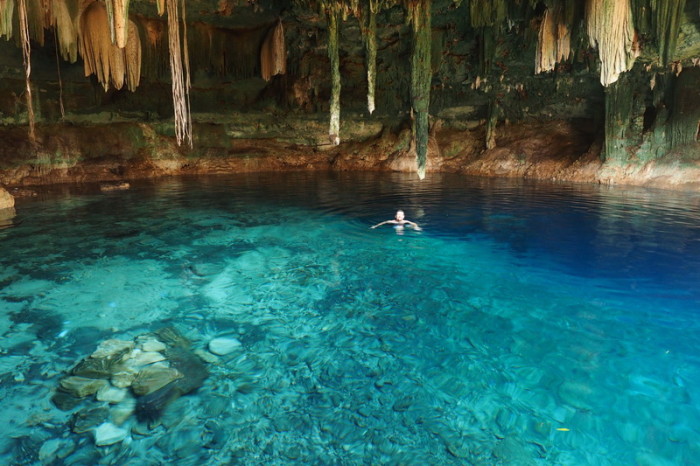

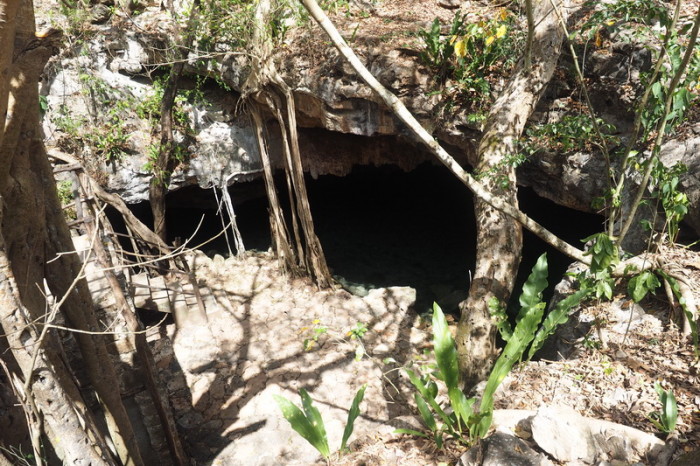
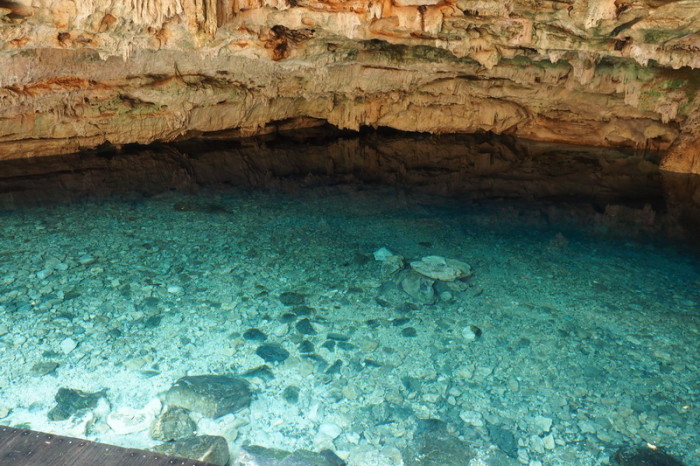

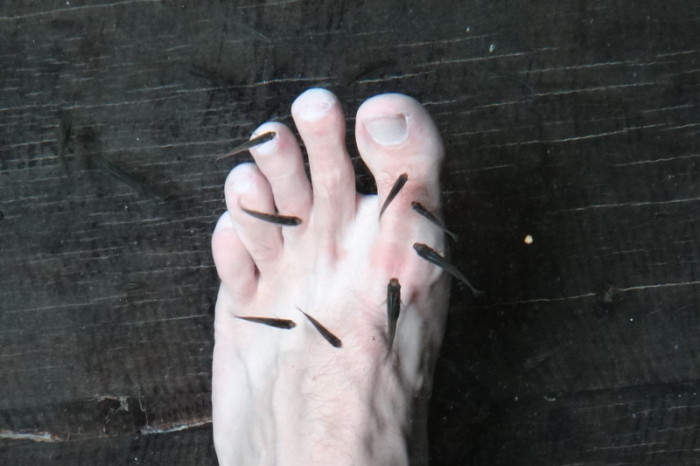
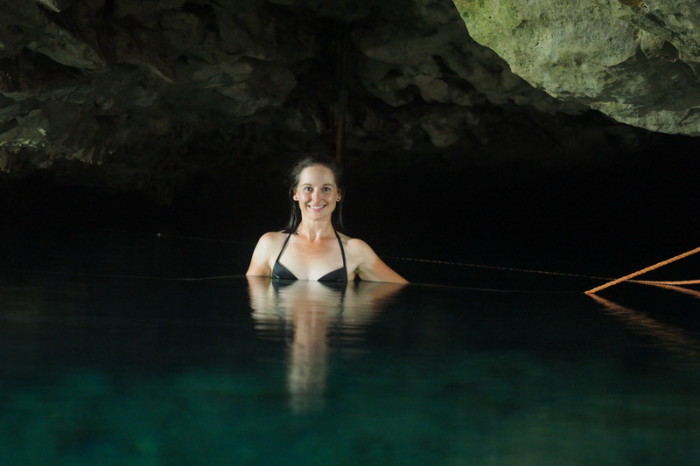
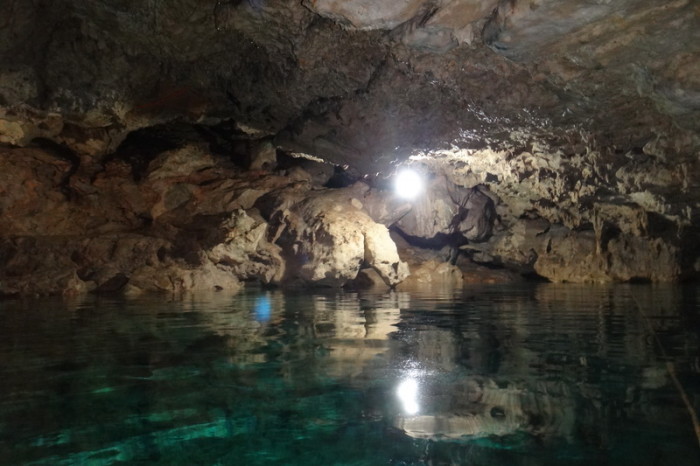
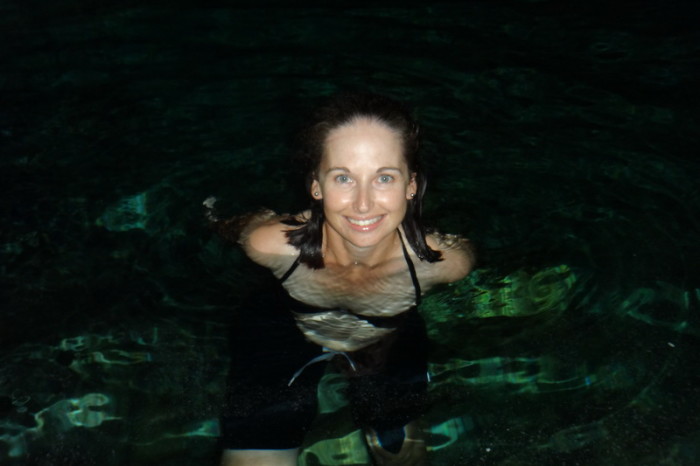





















Recent Comments